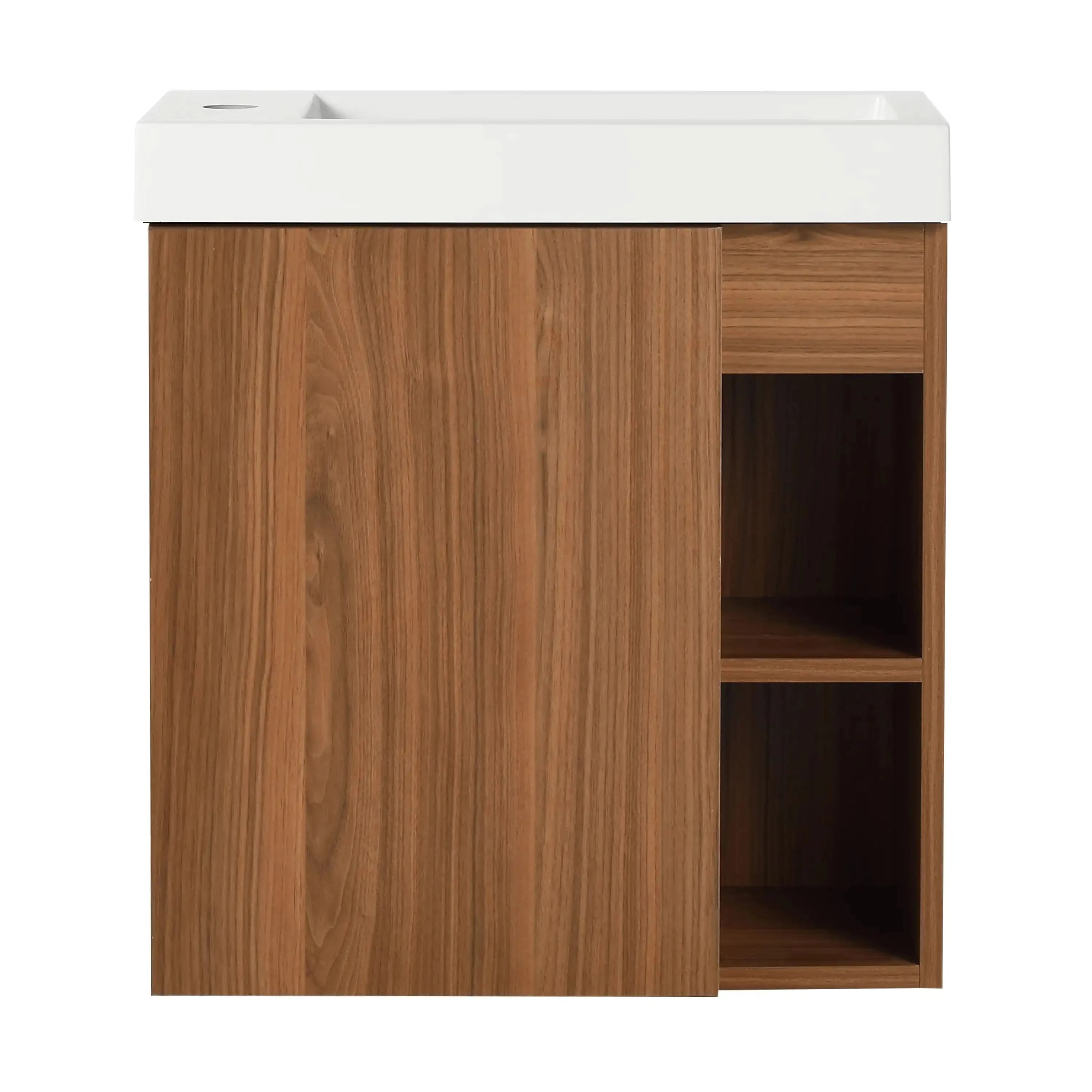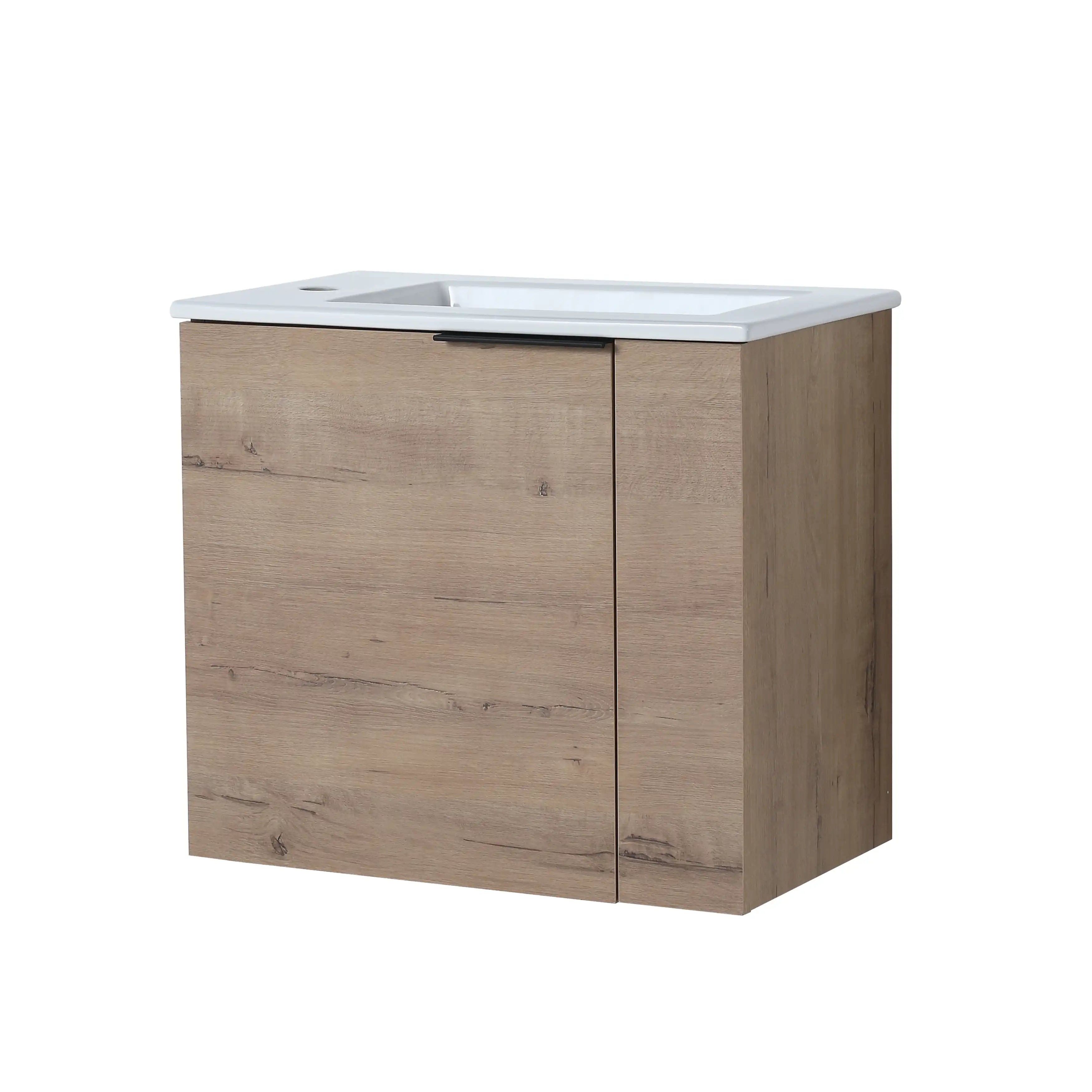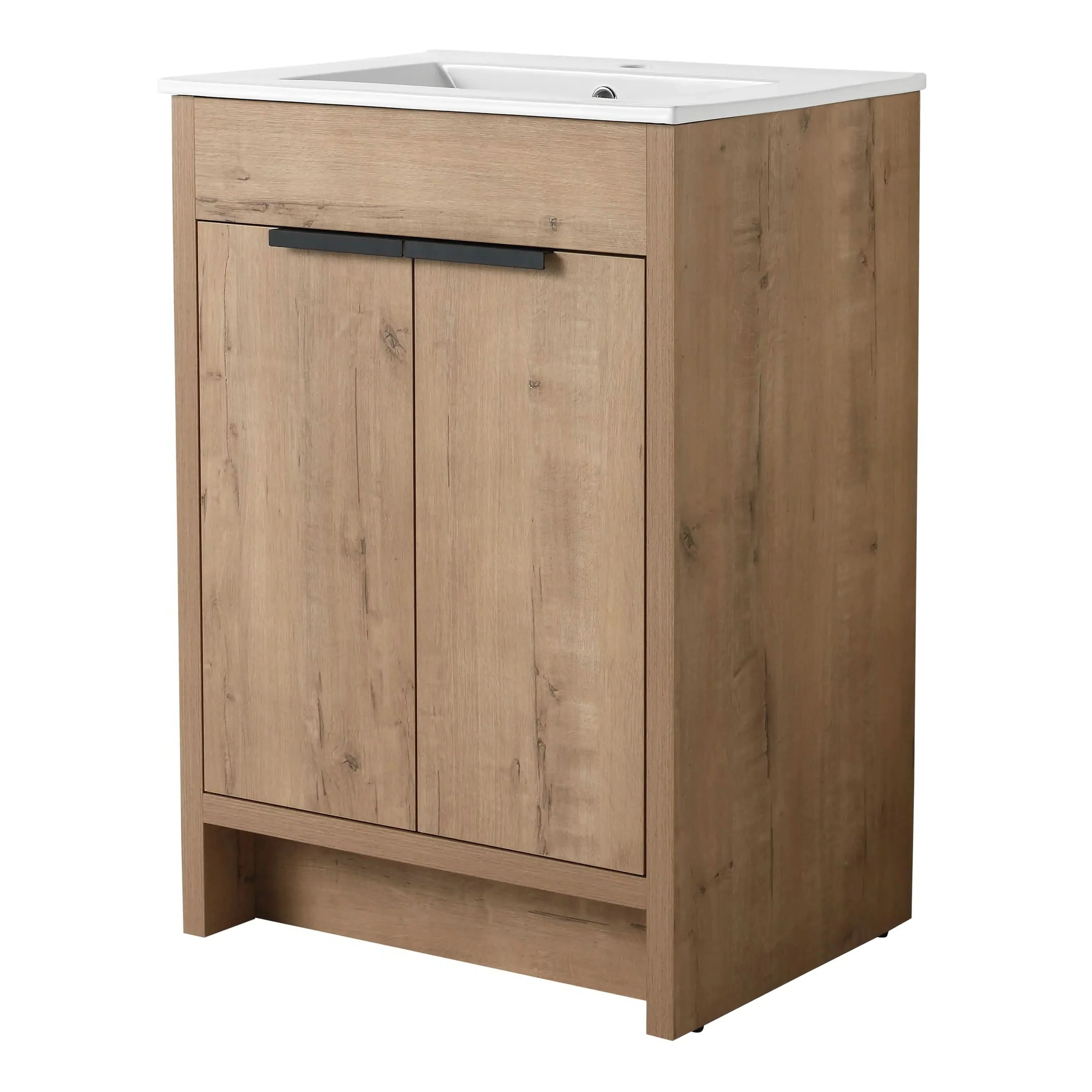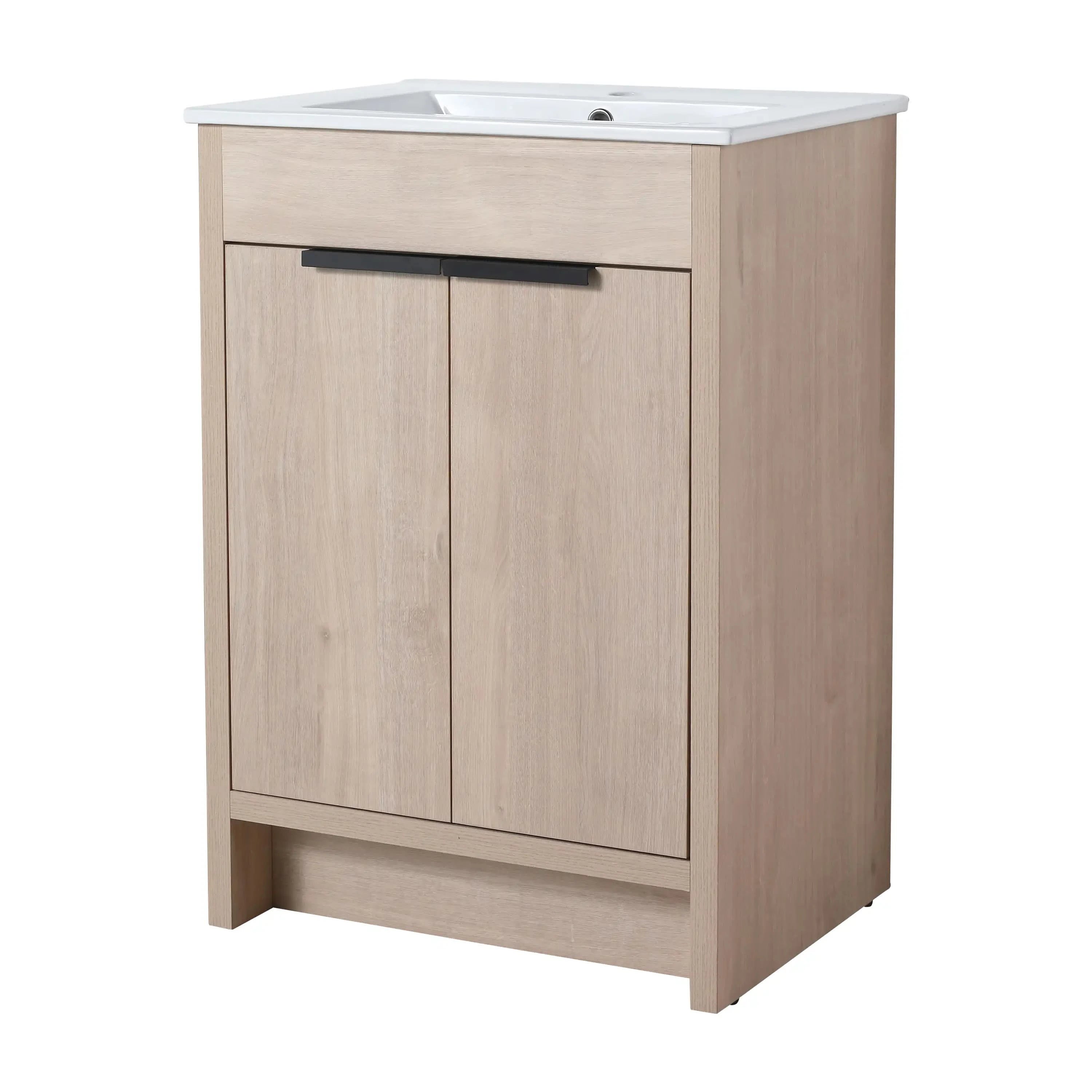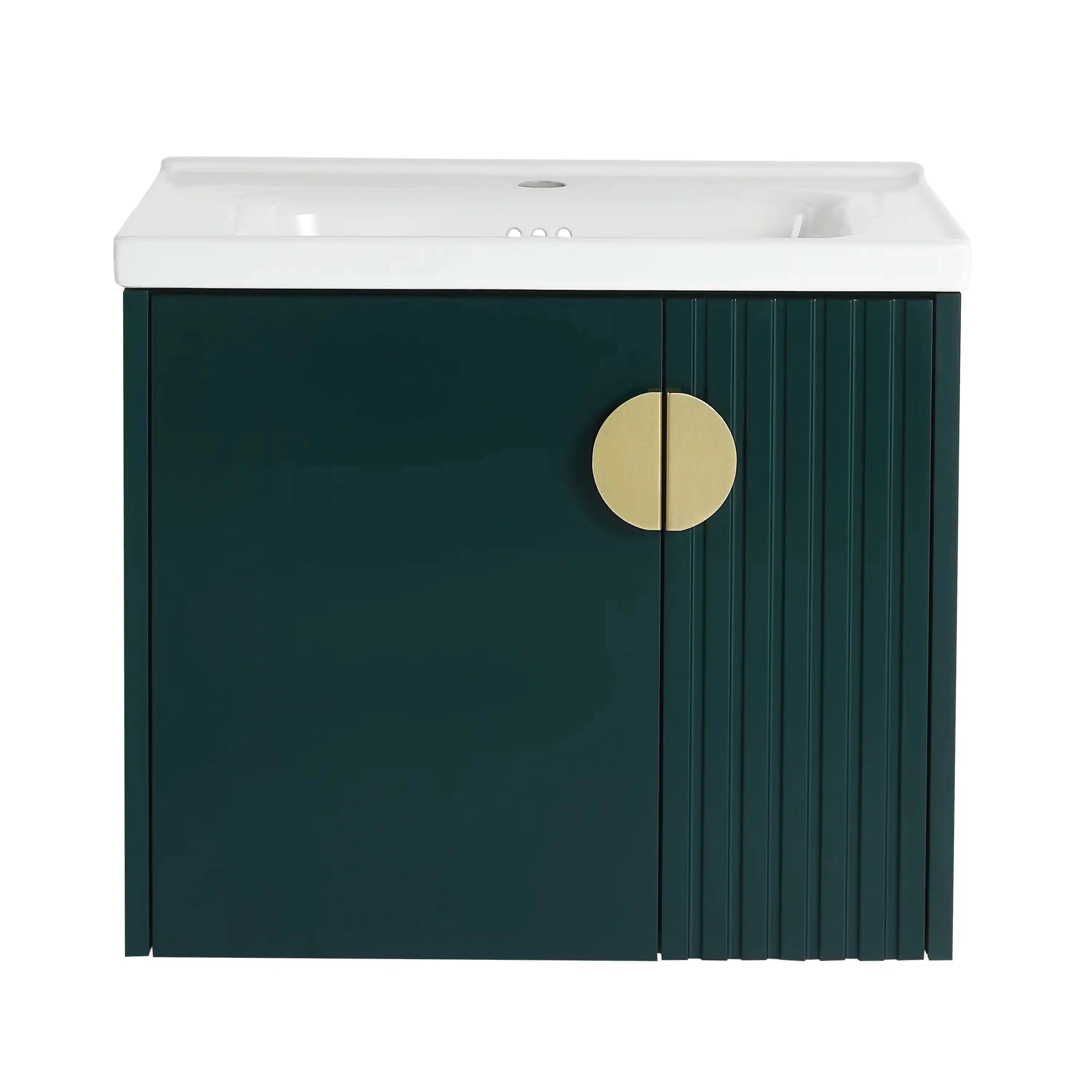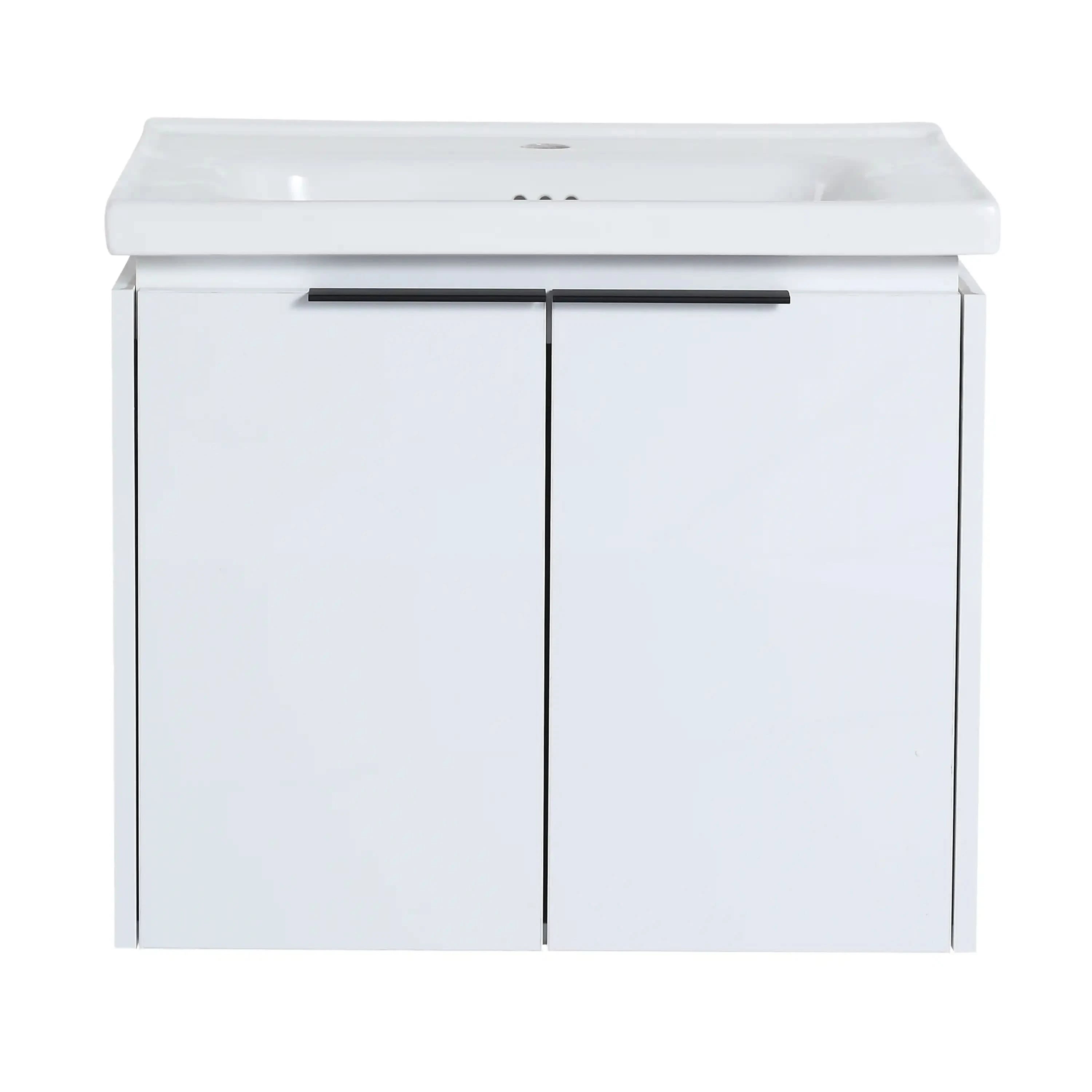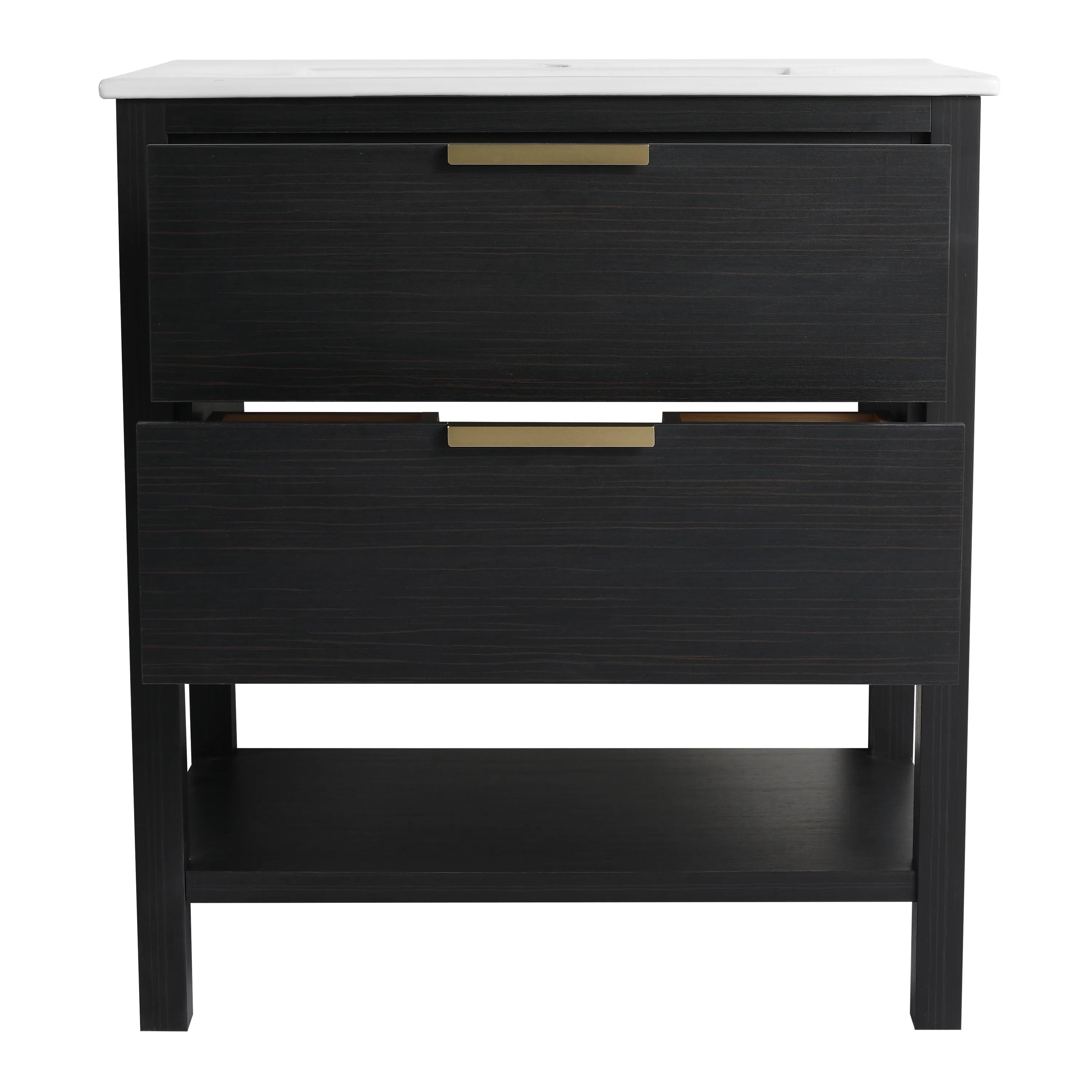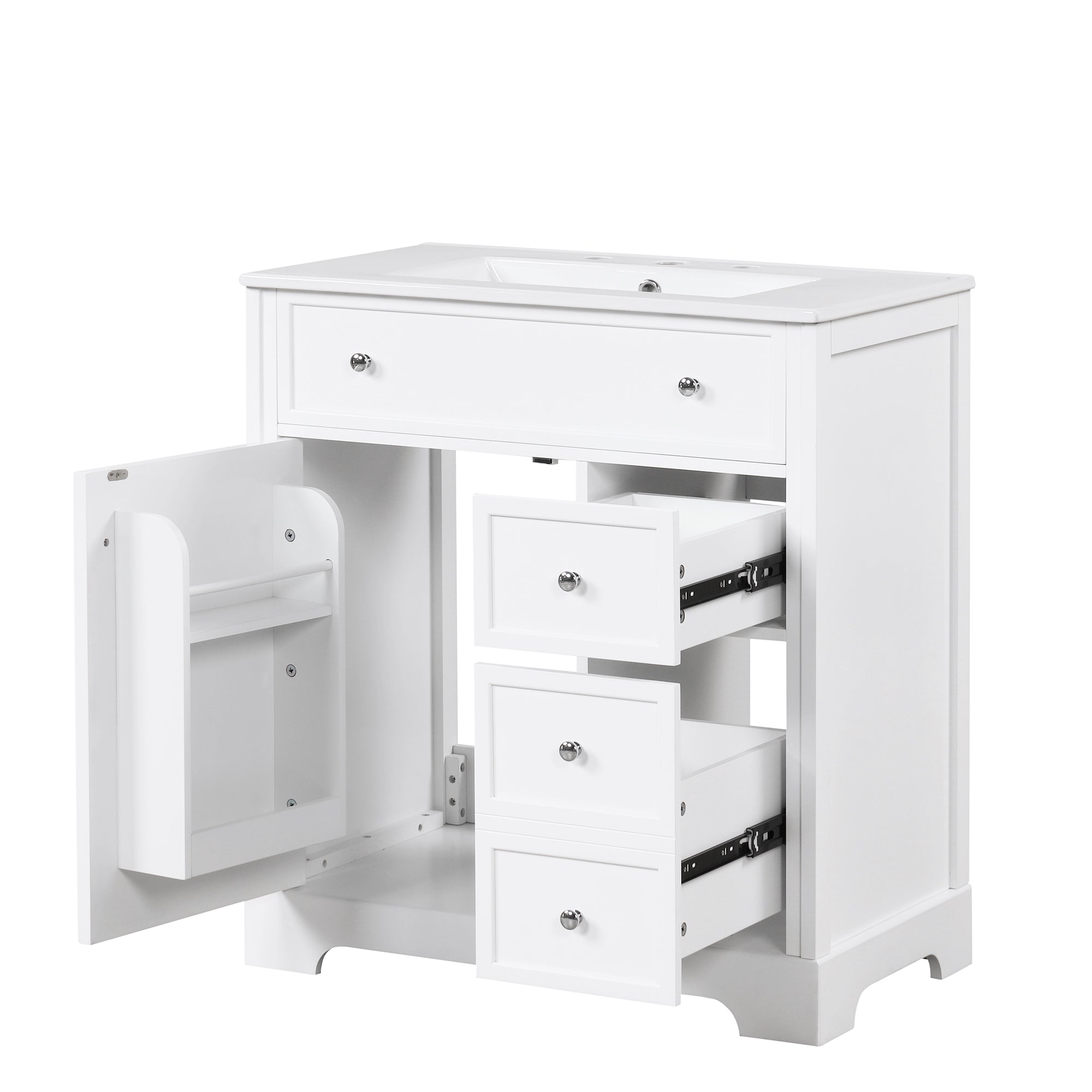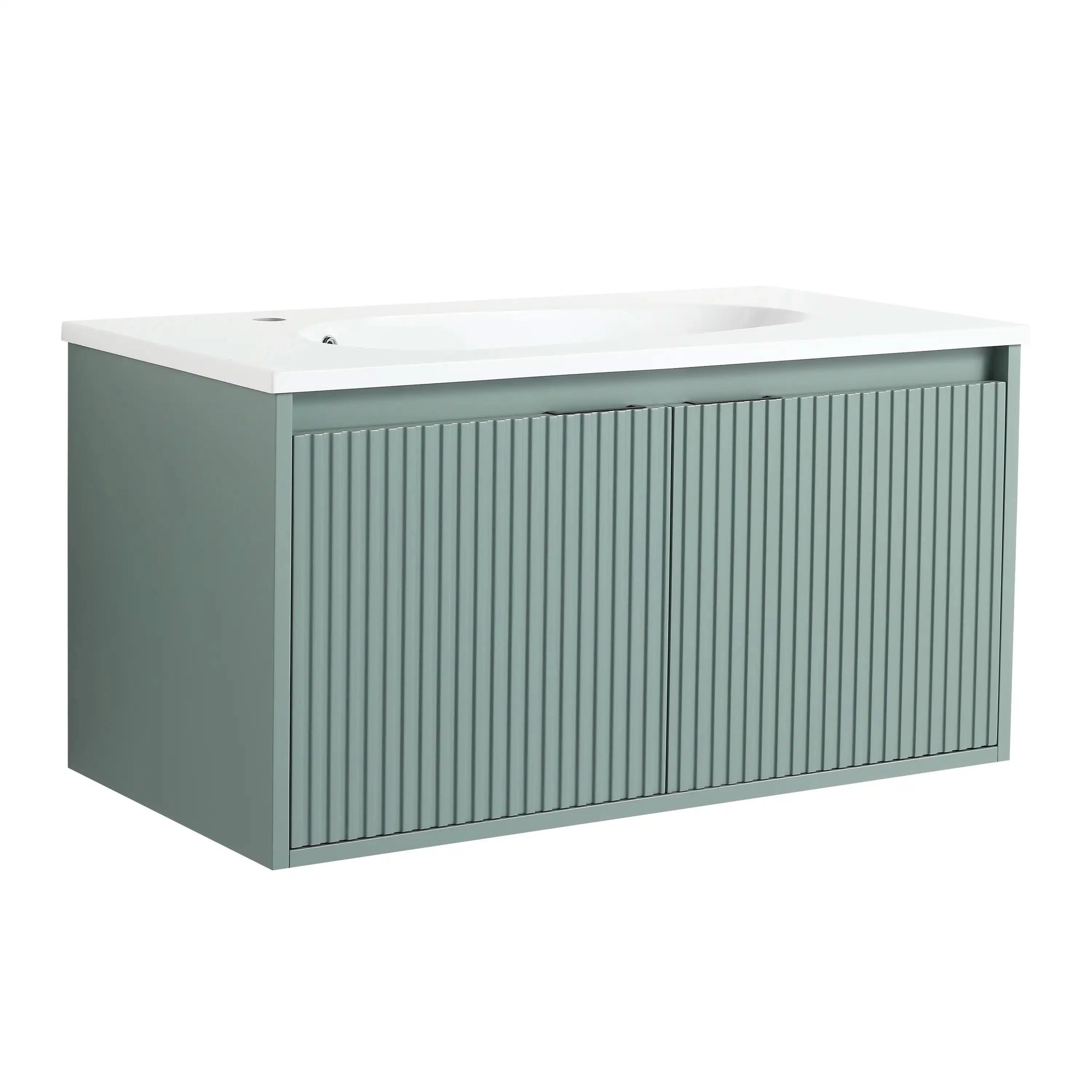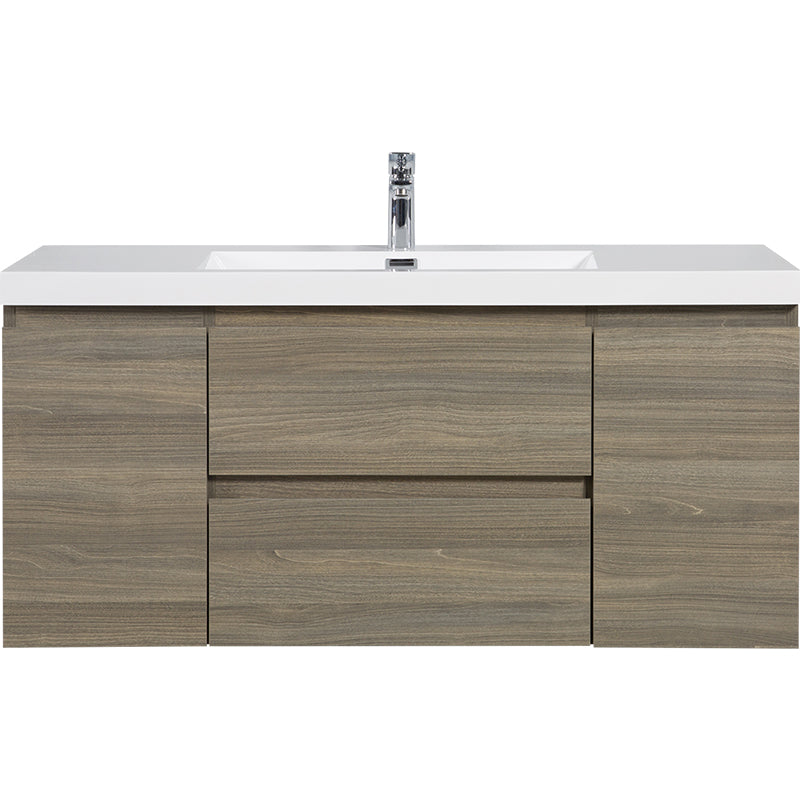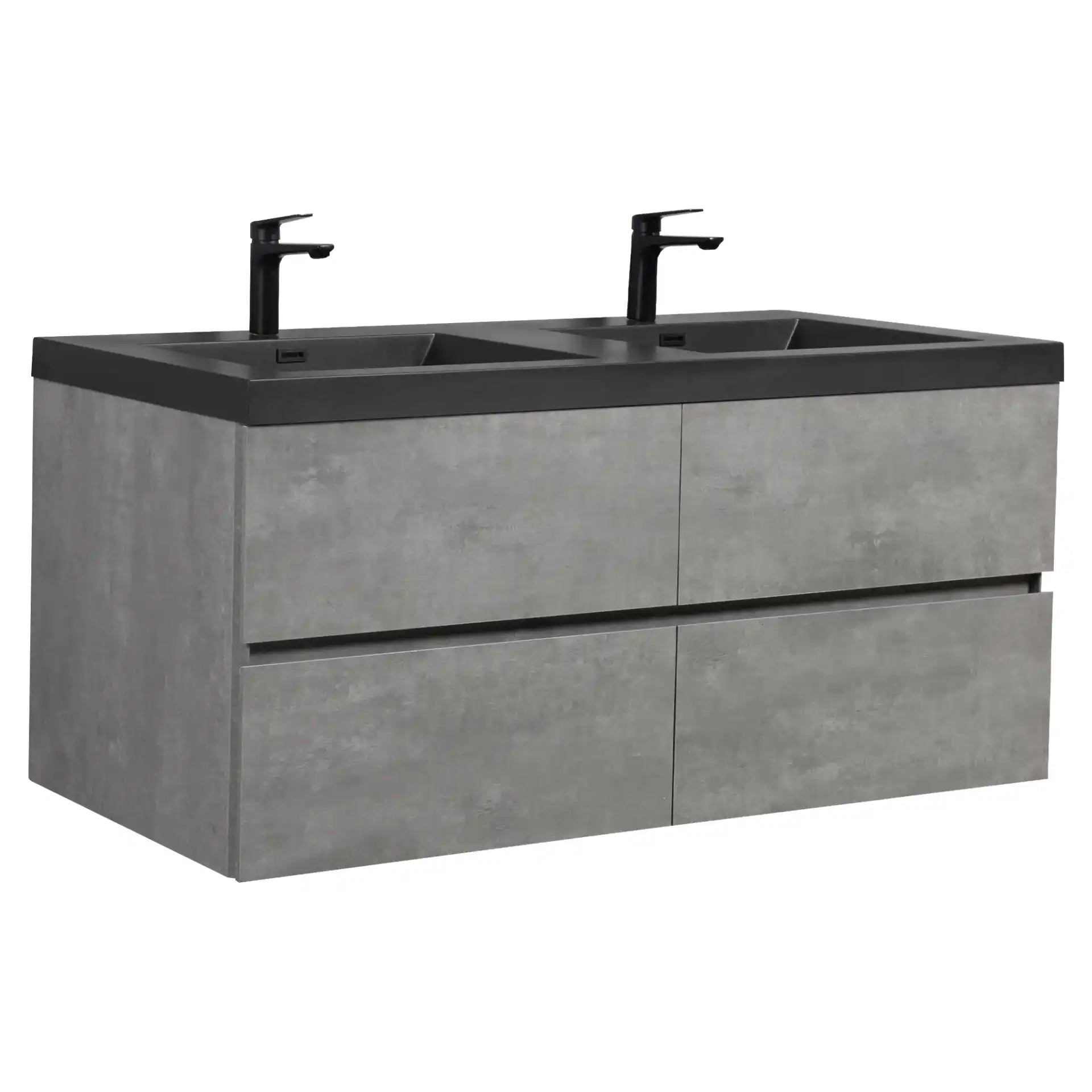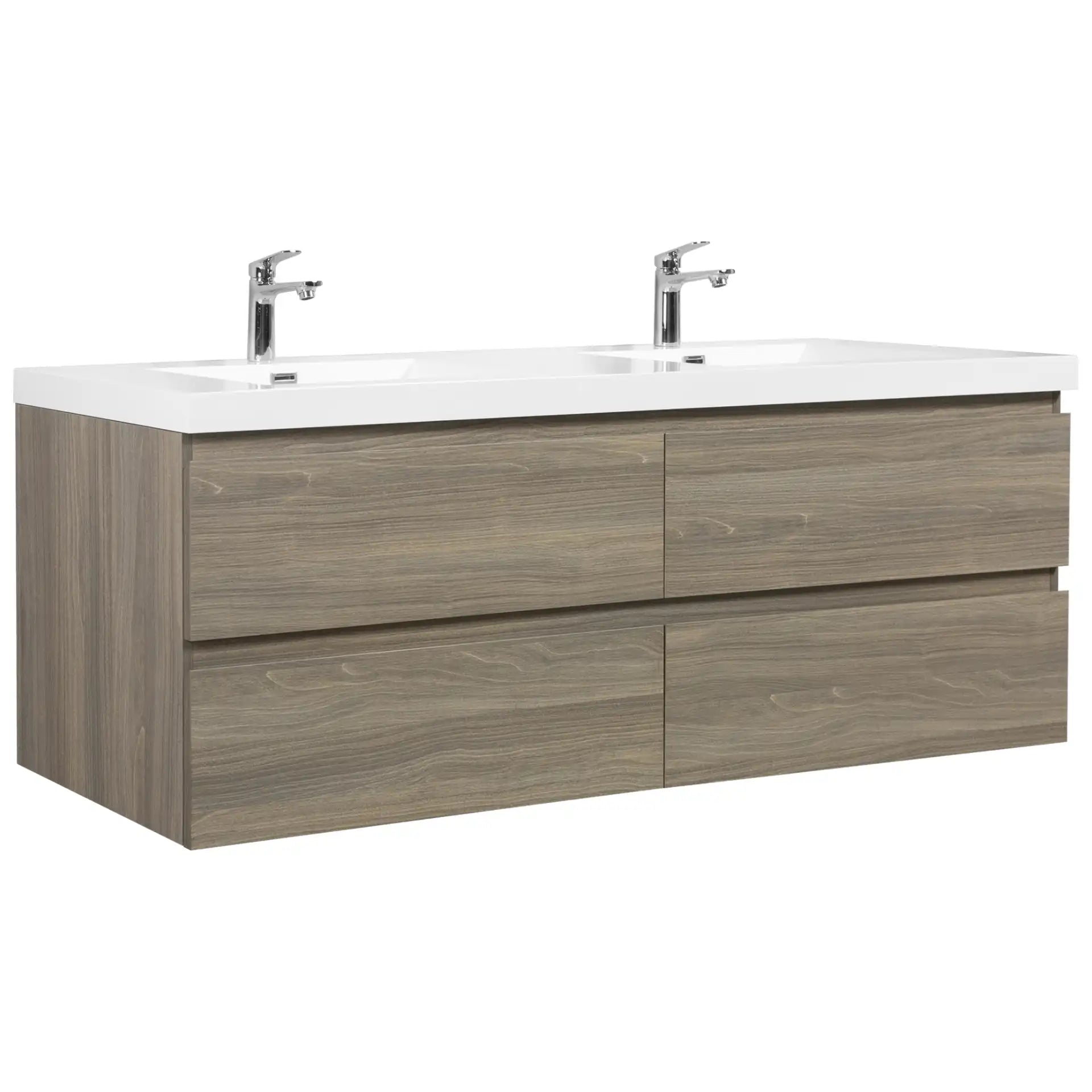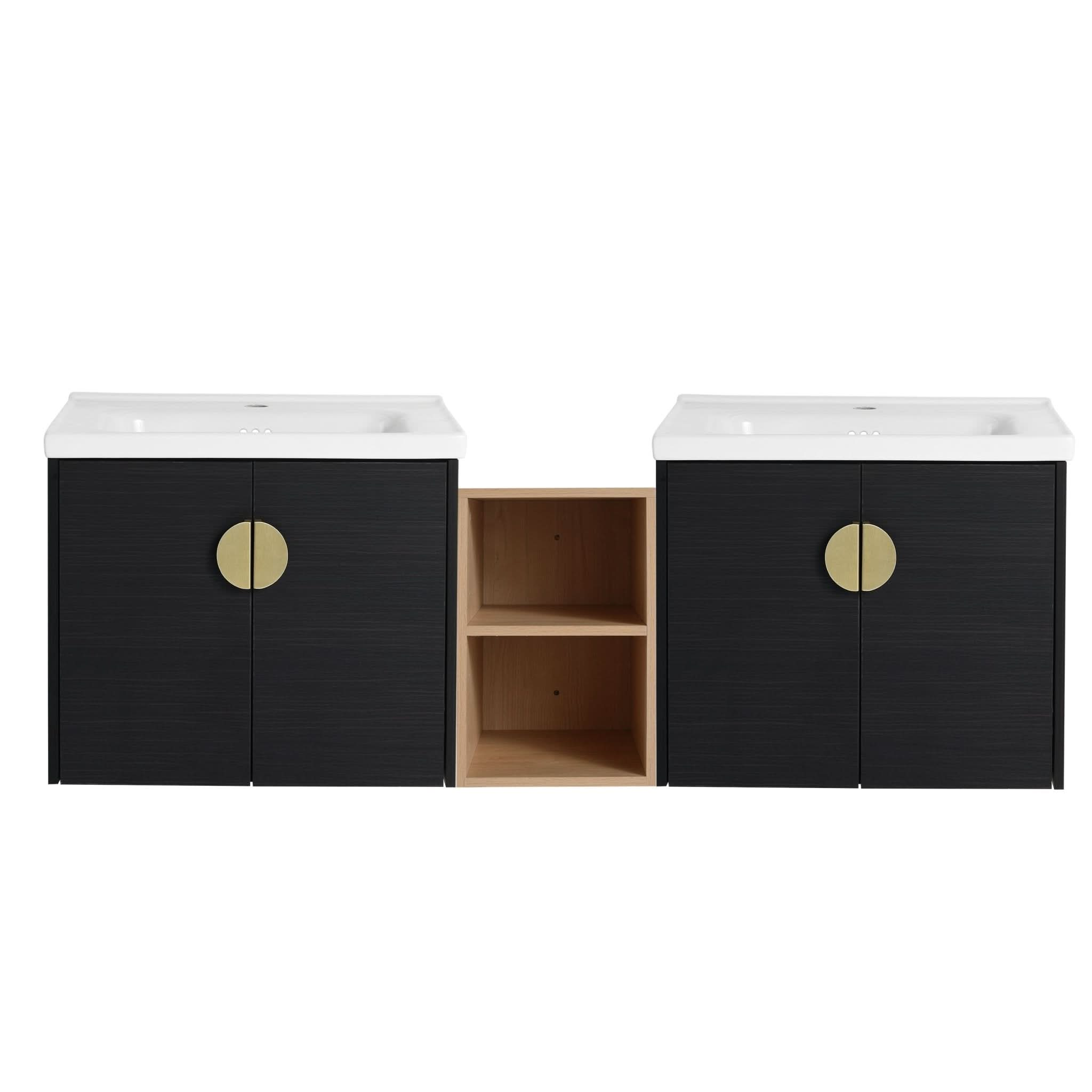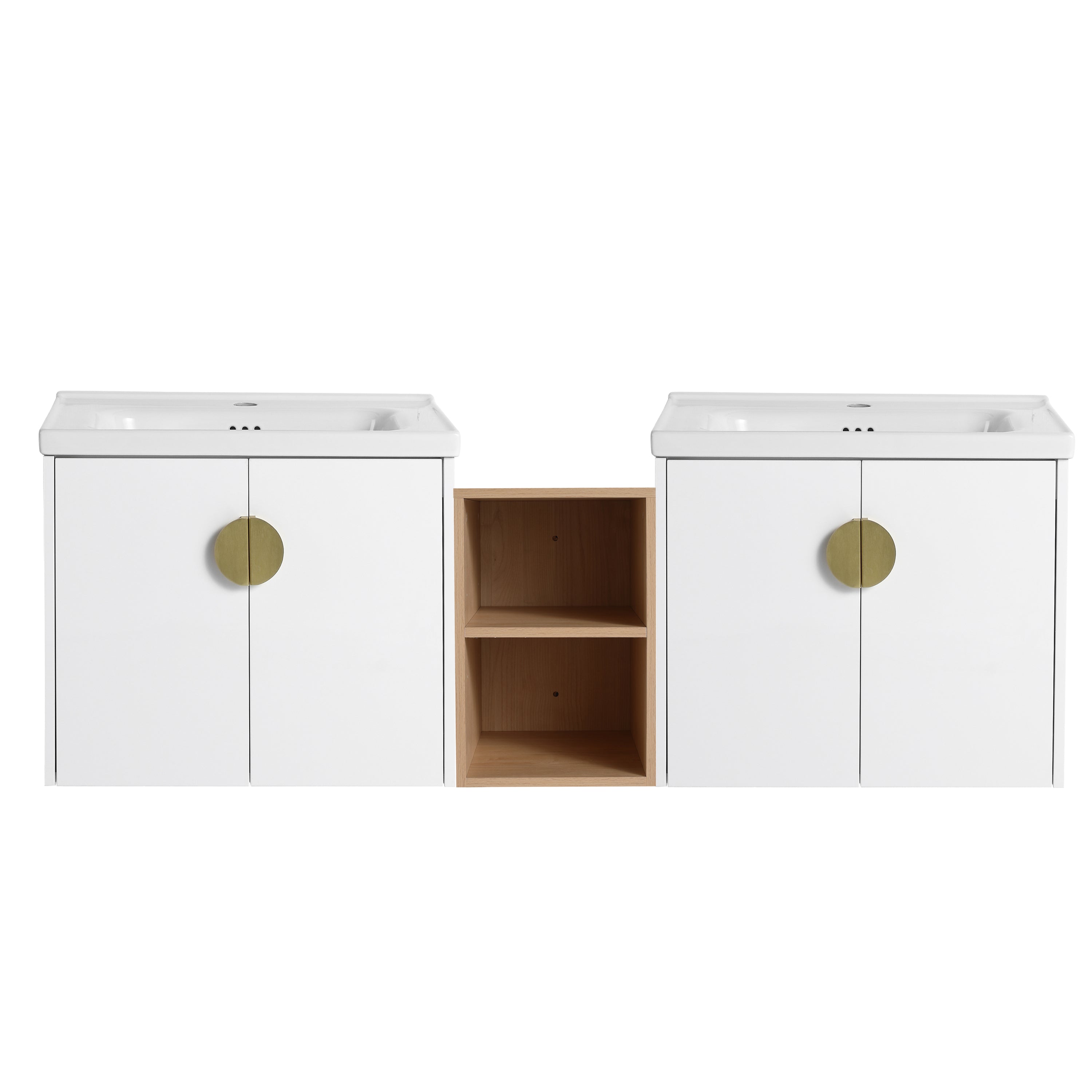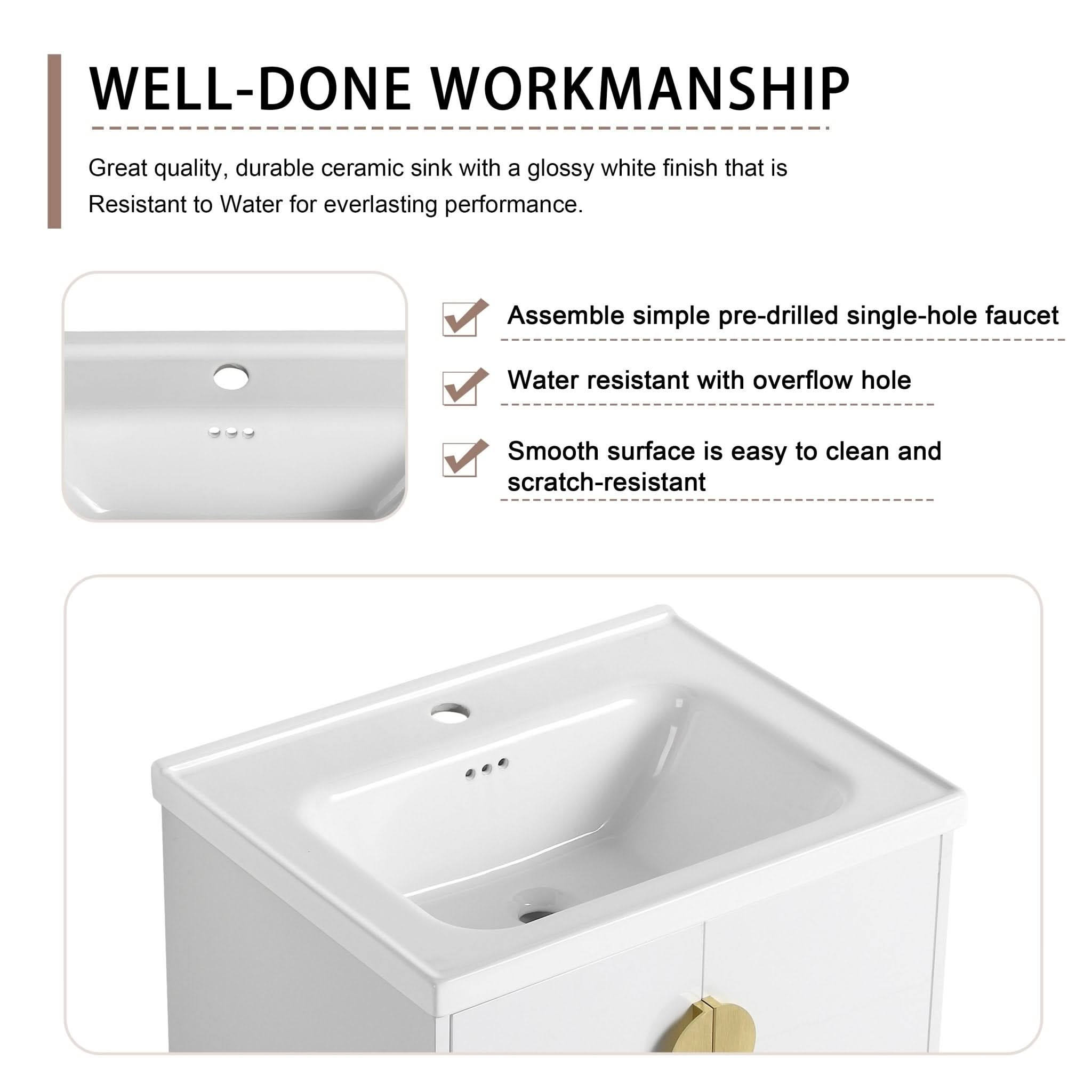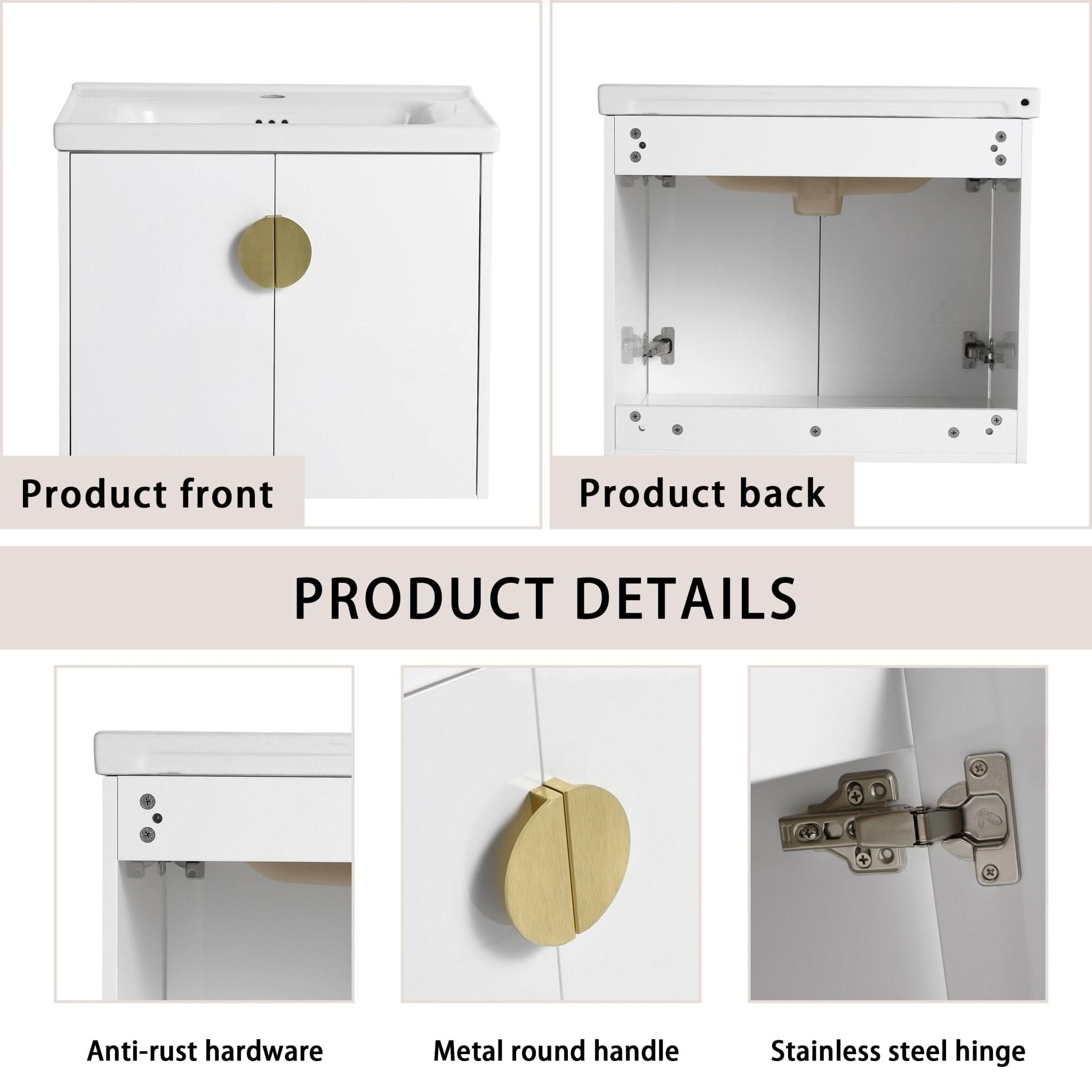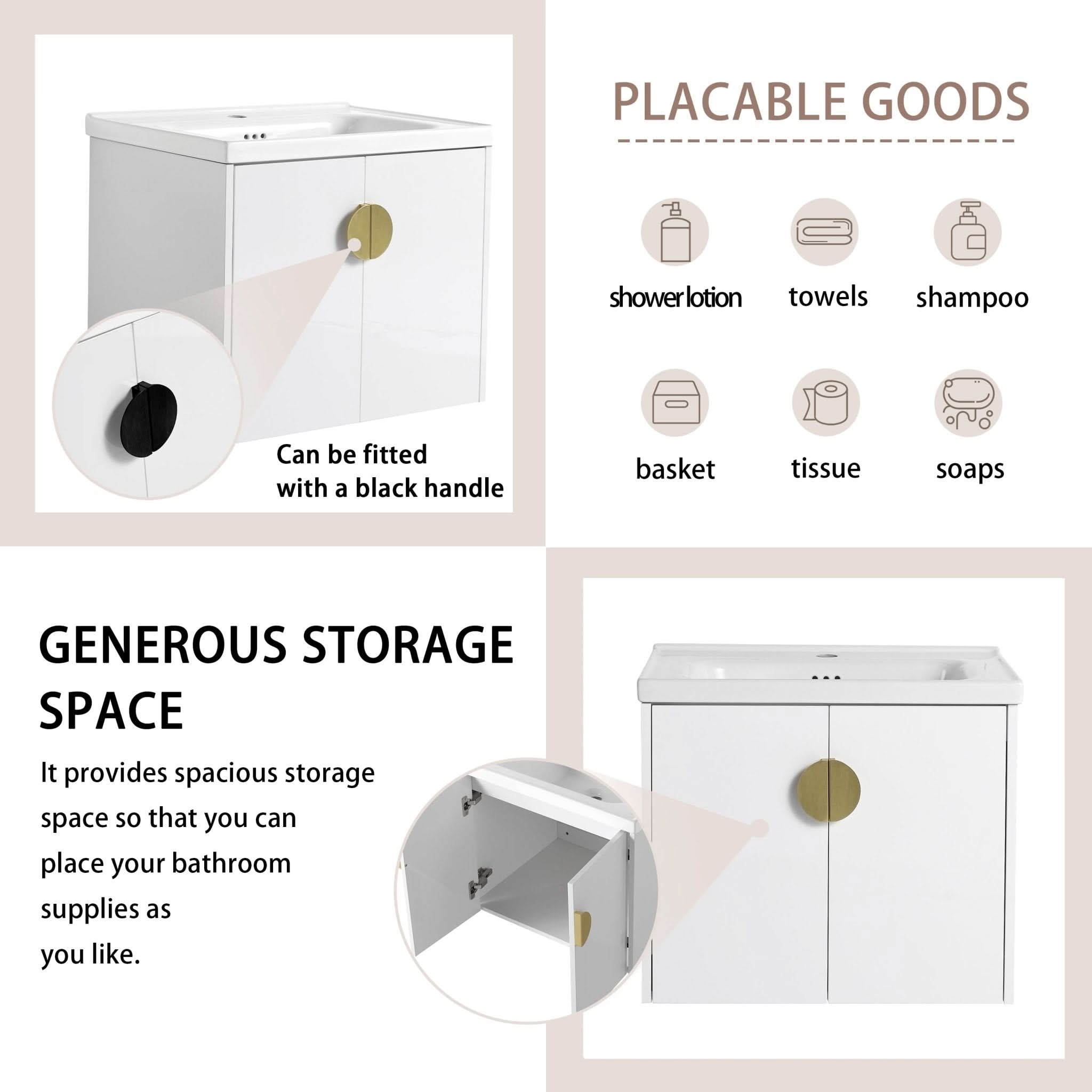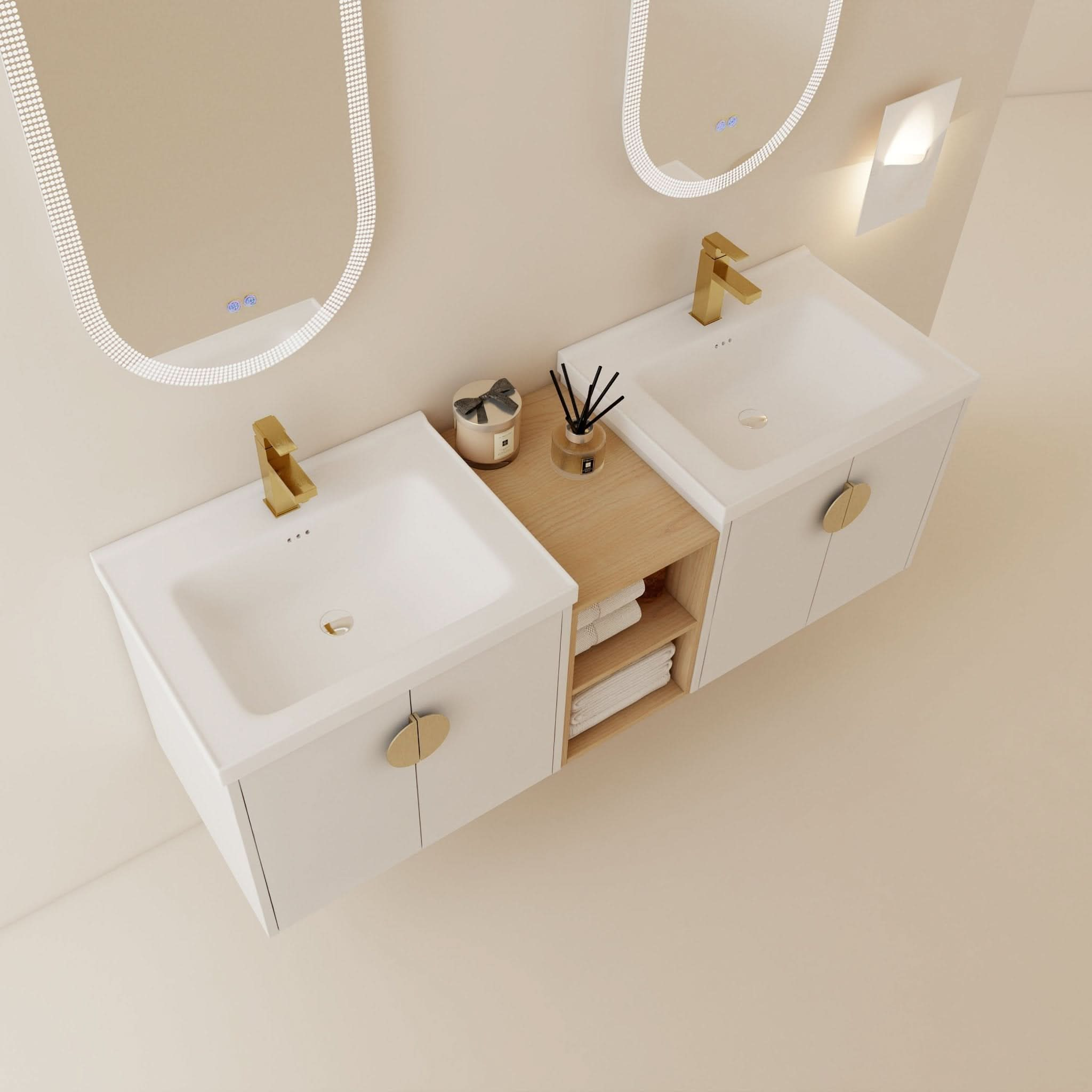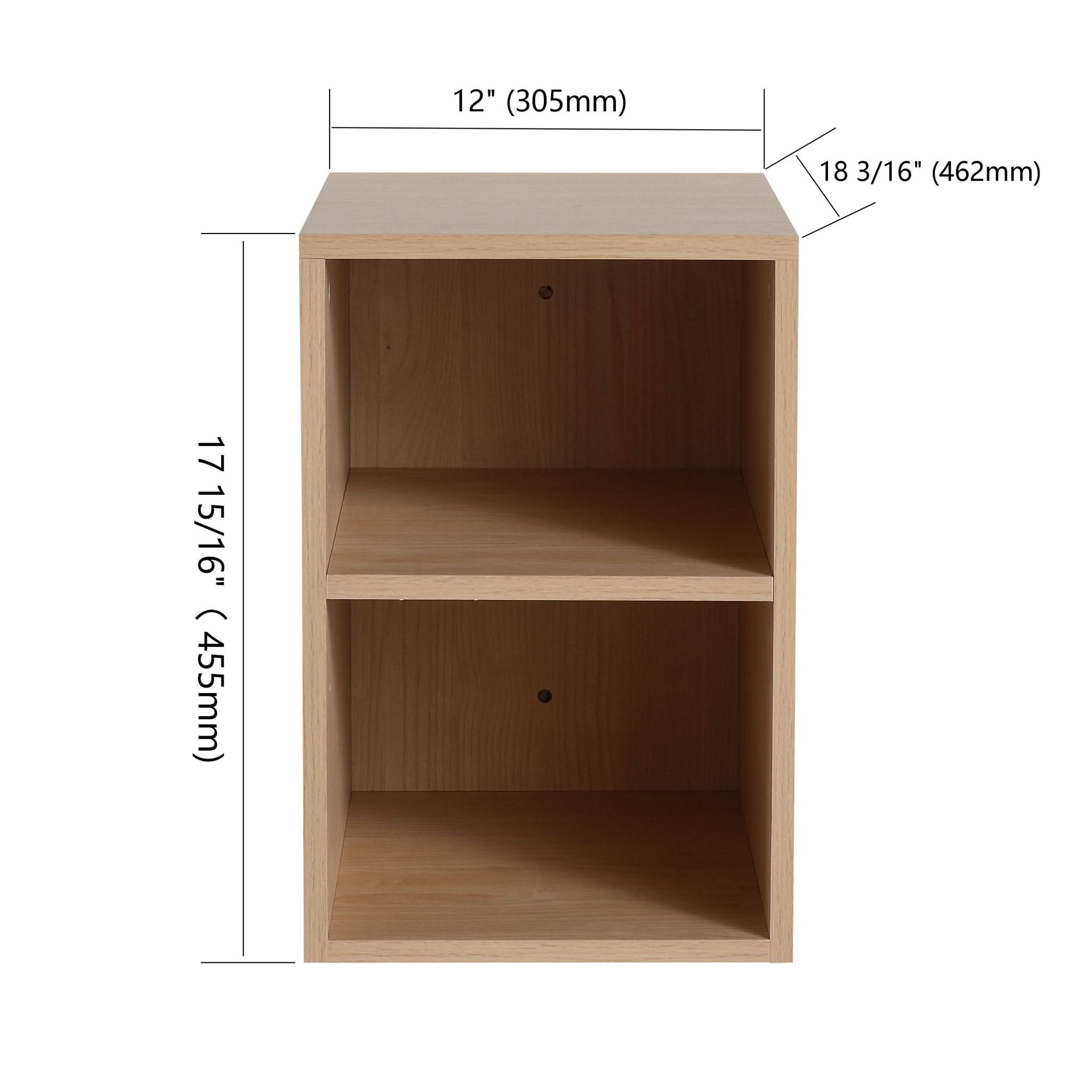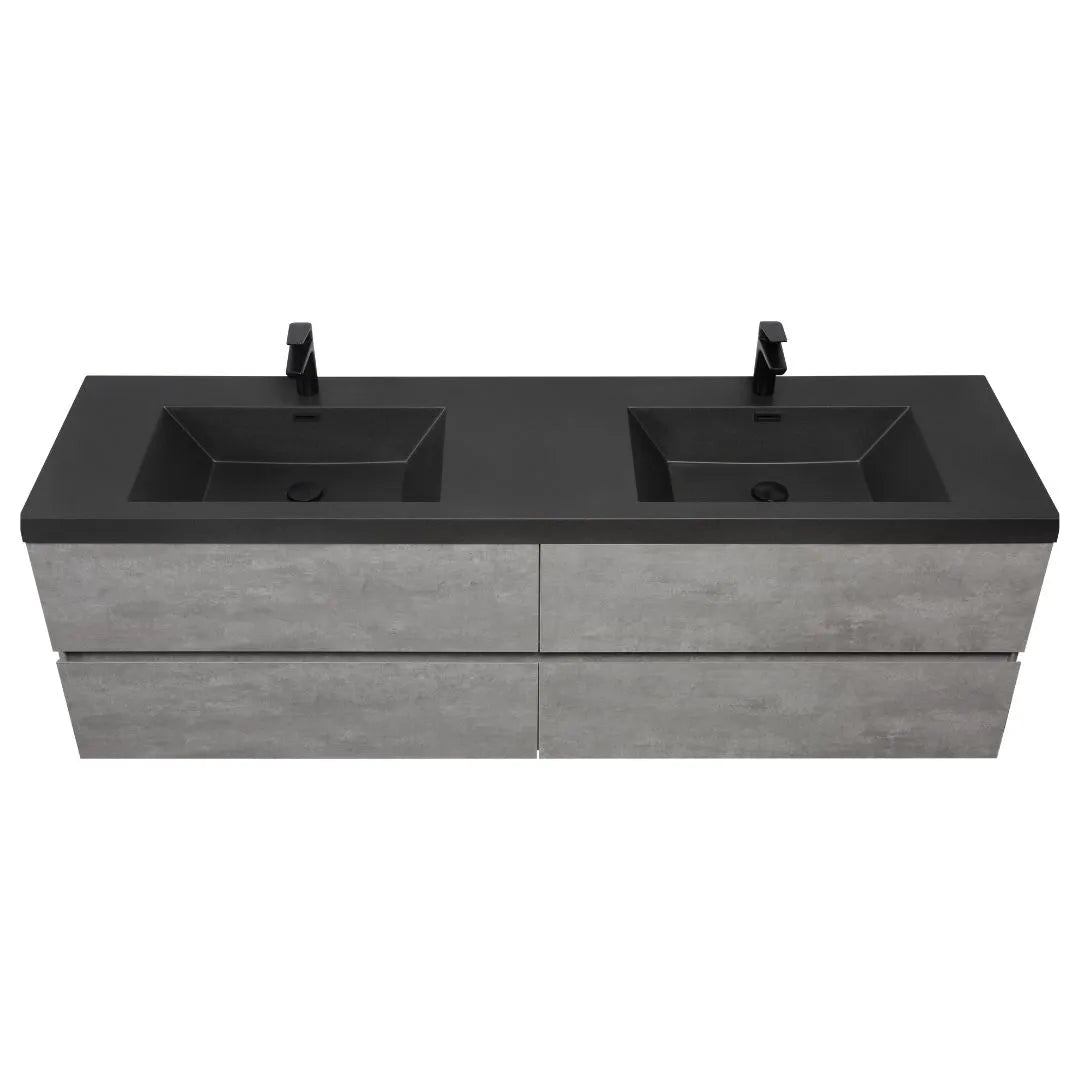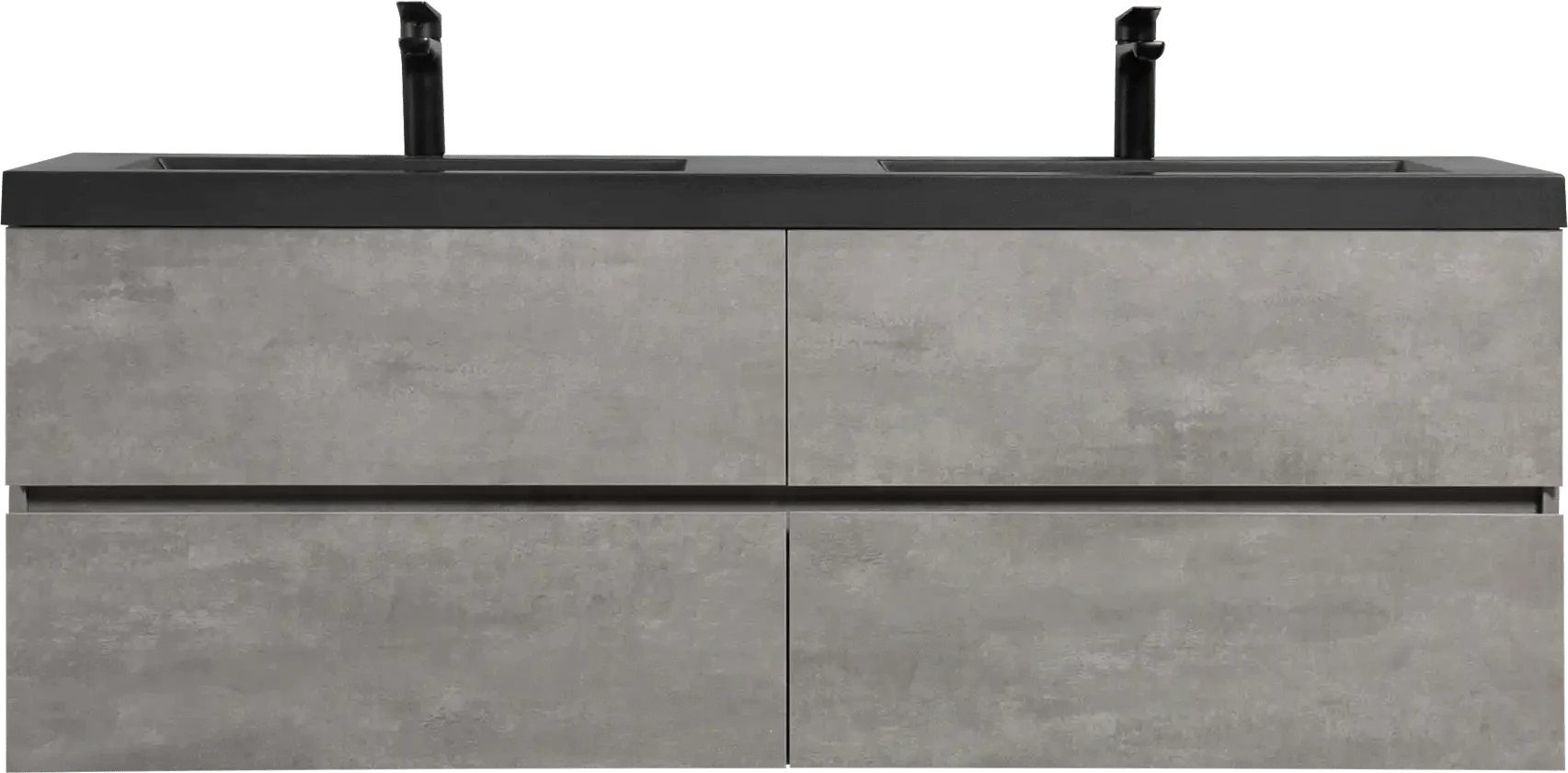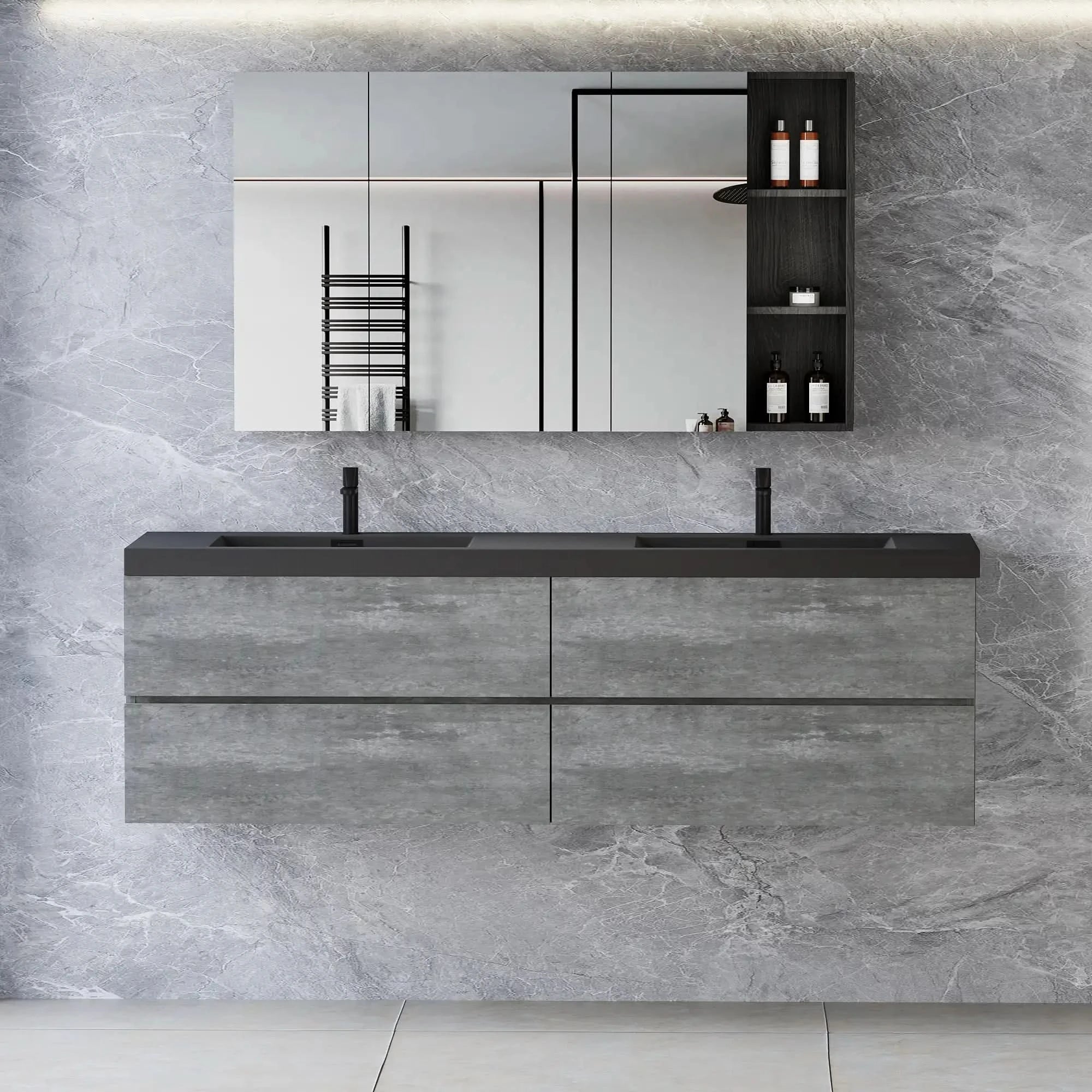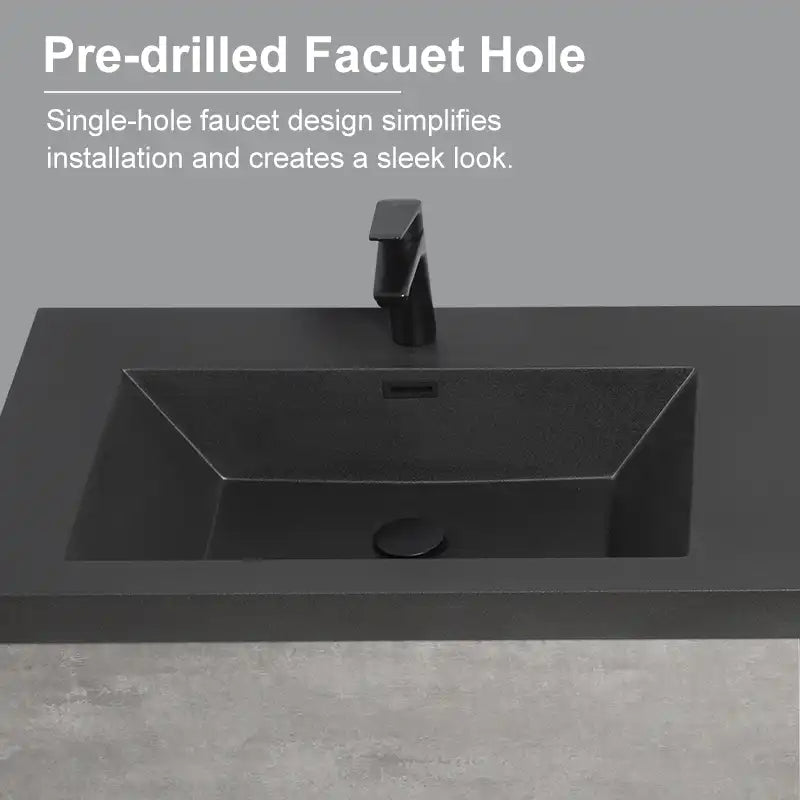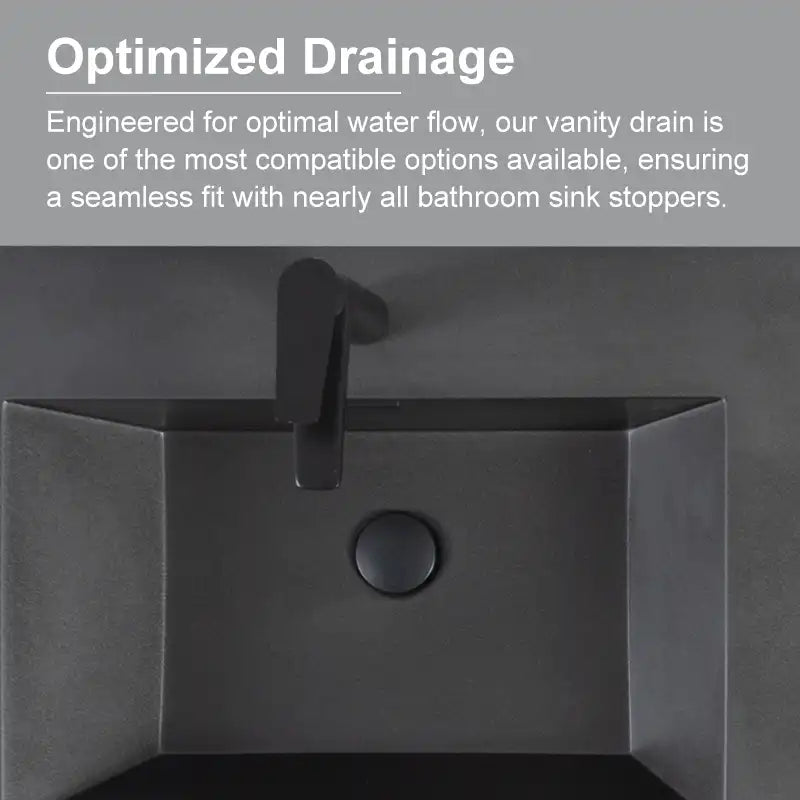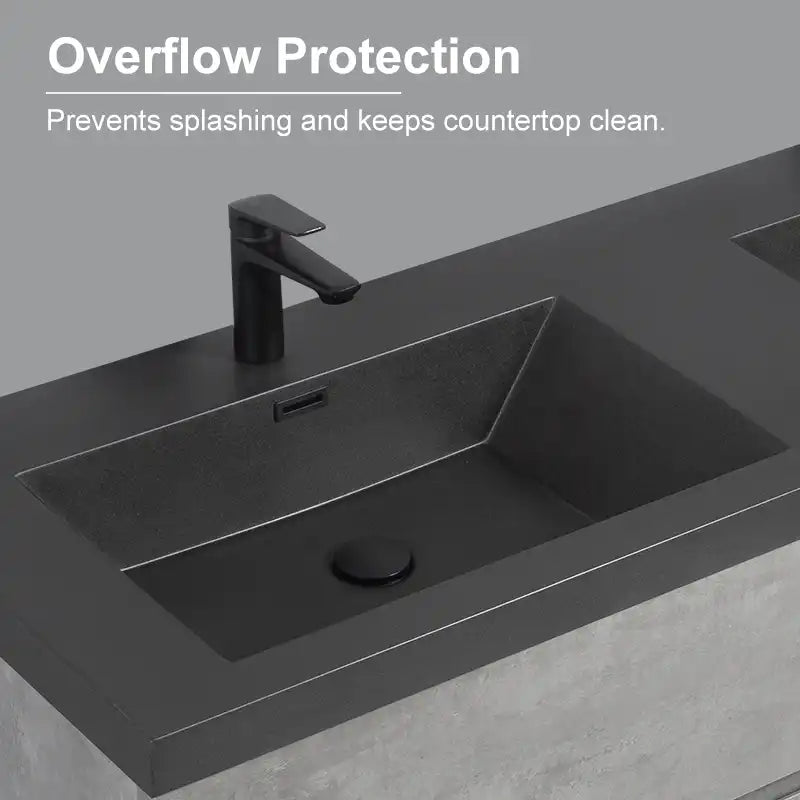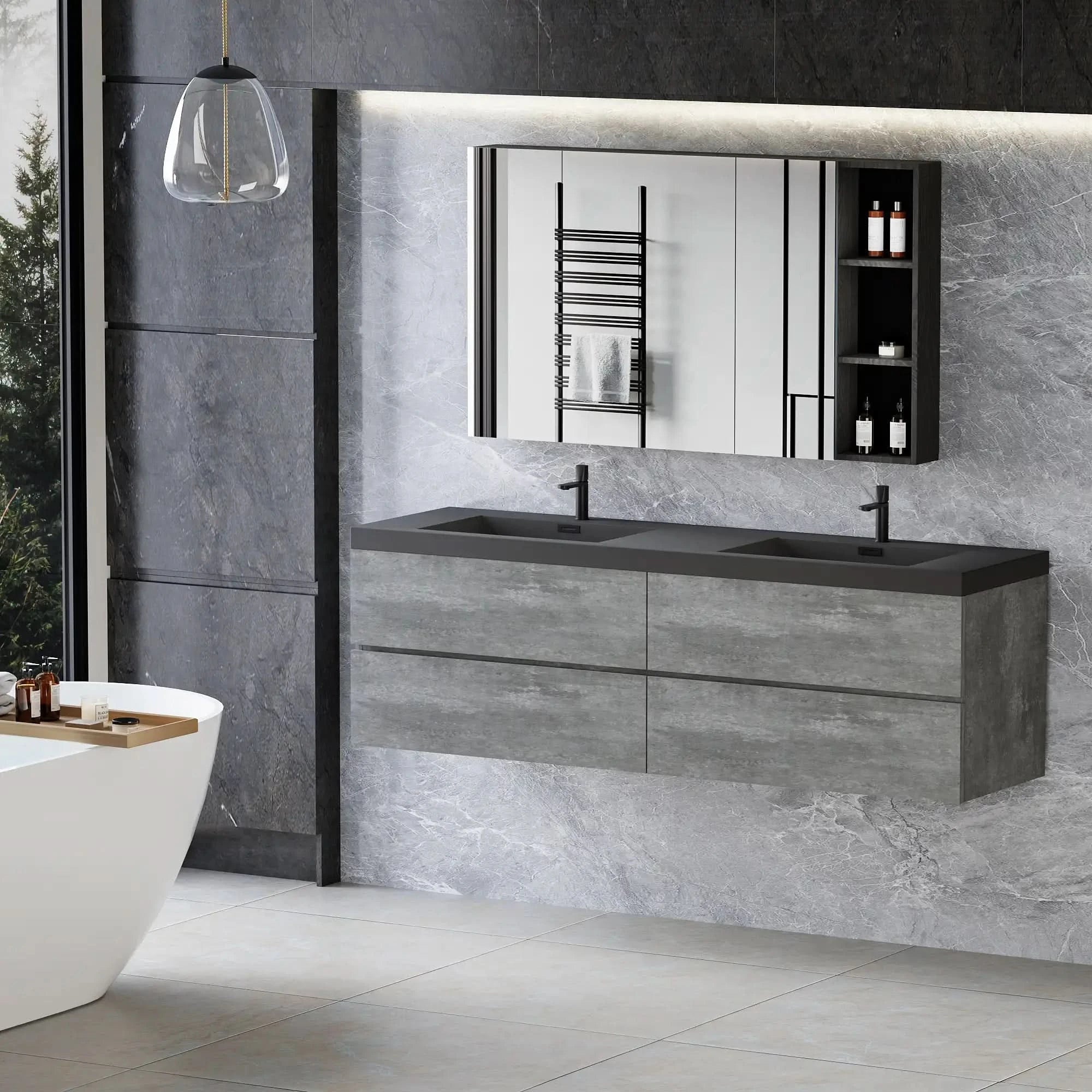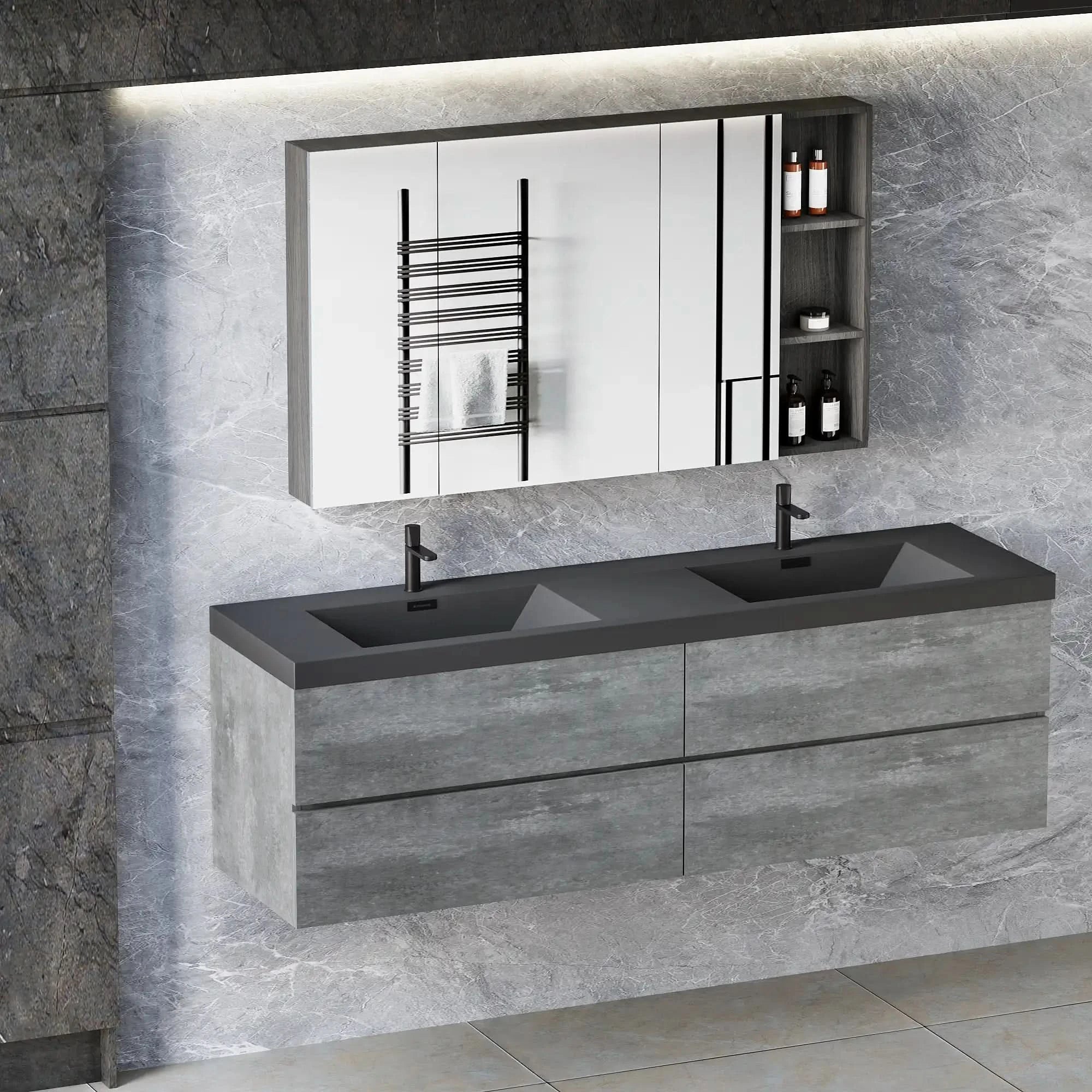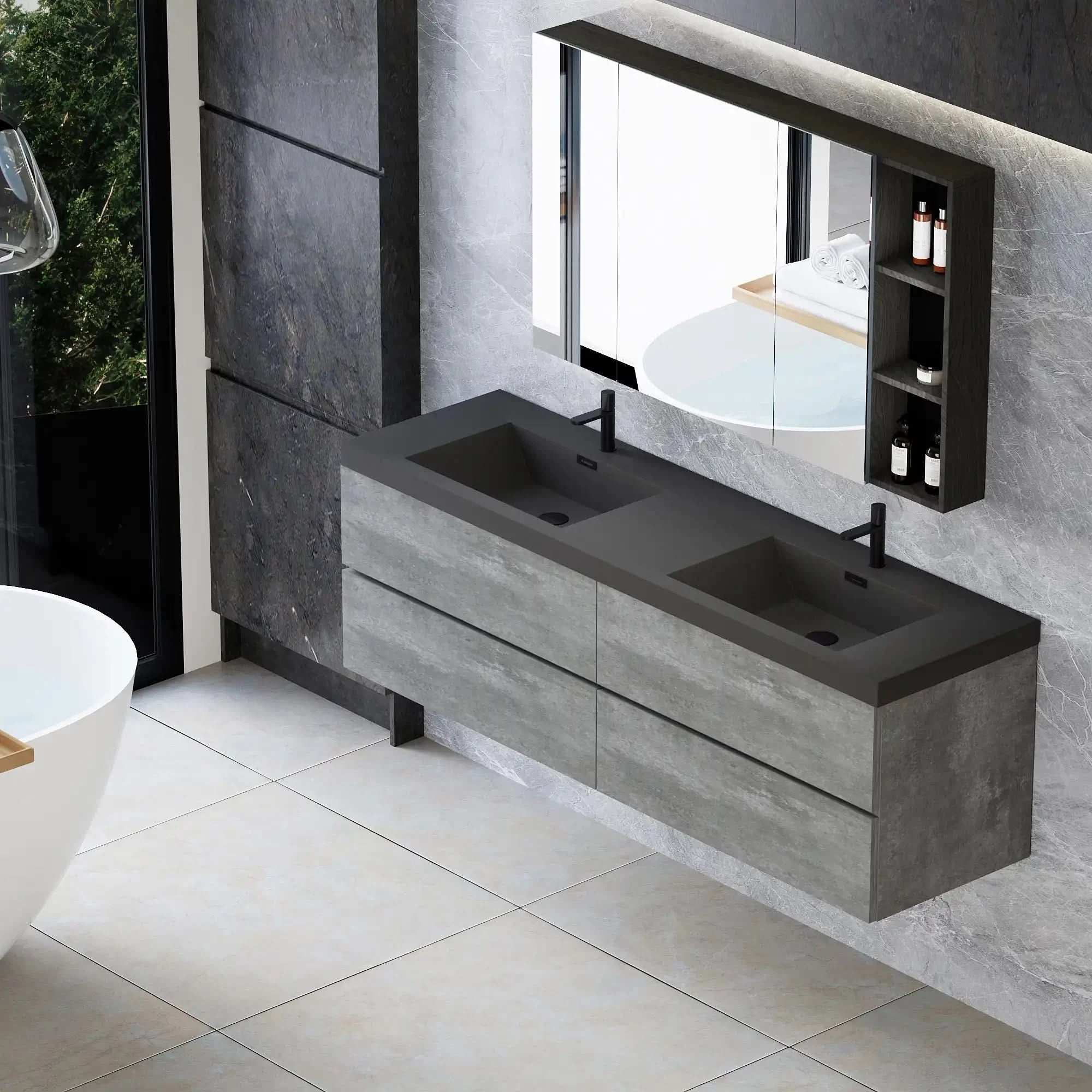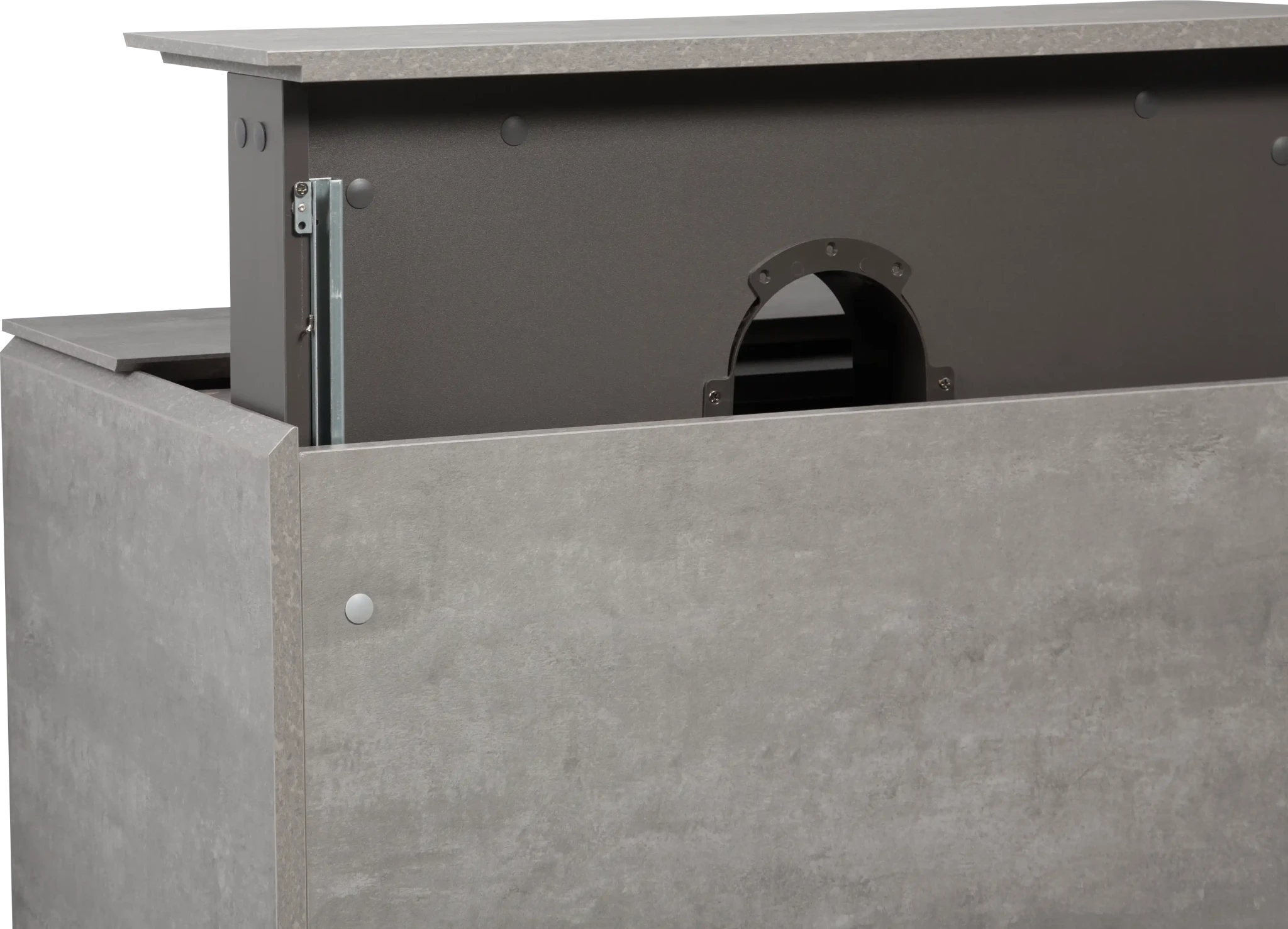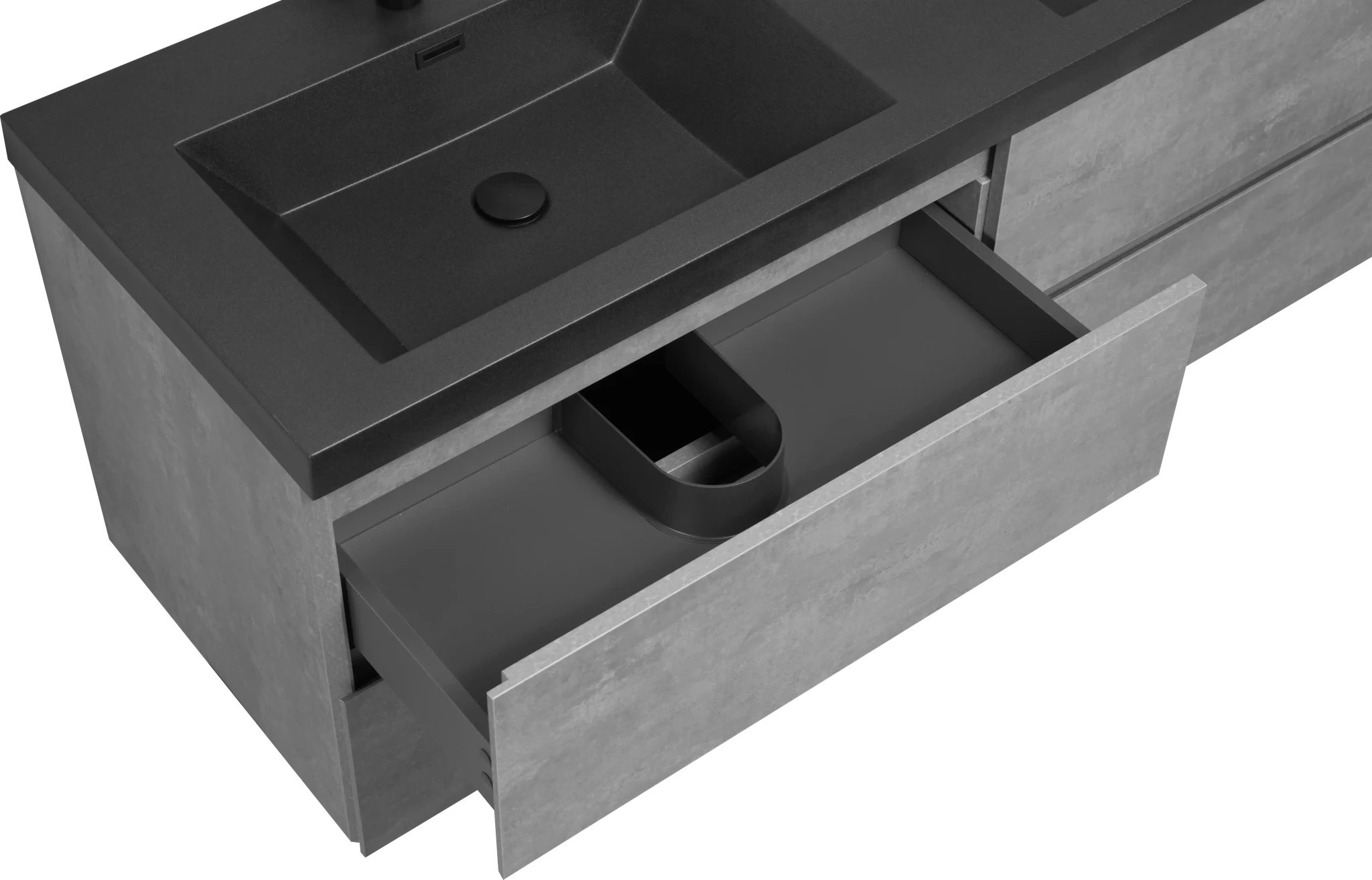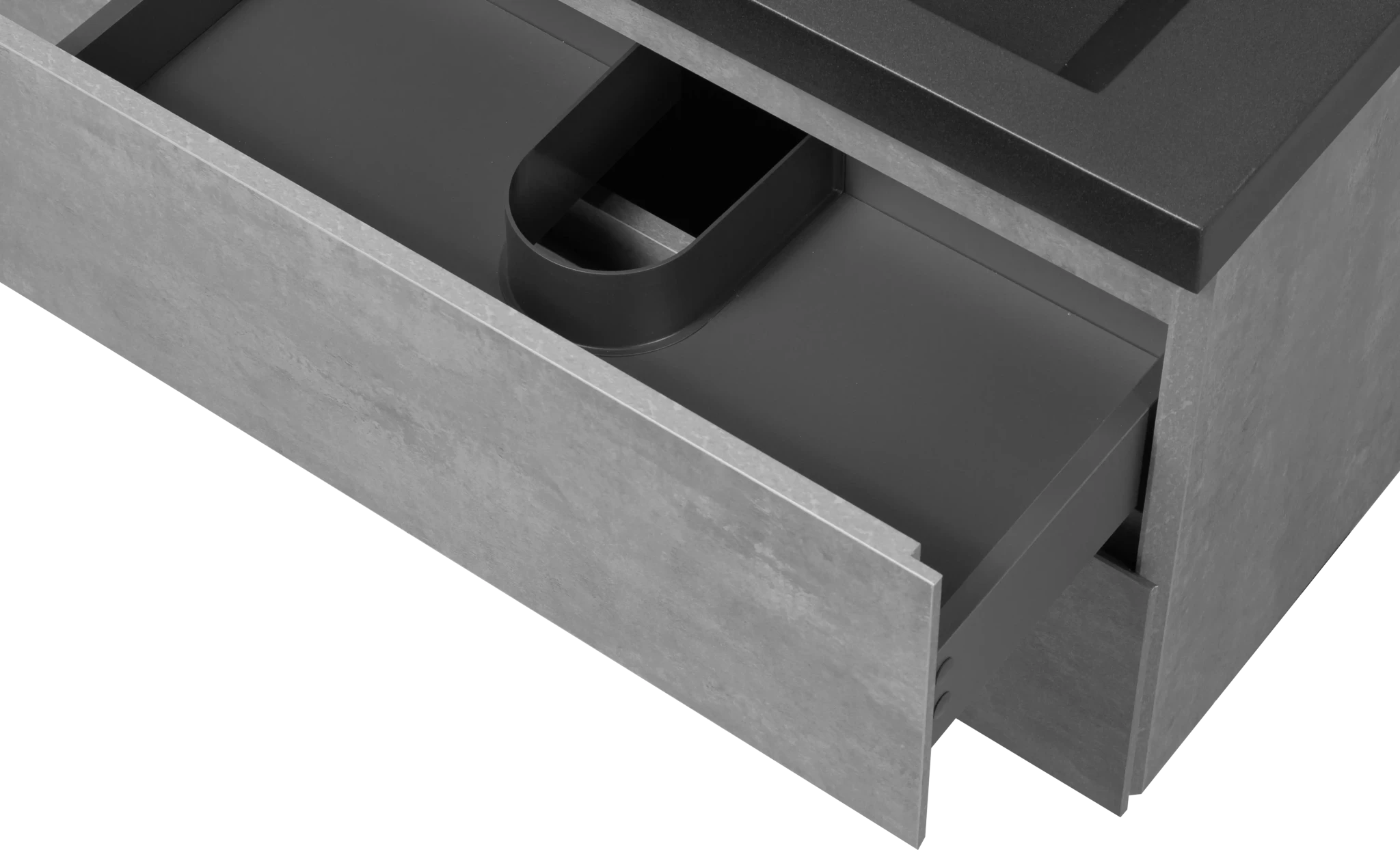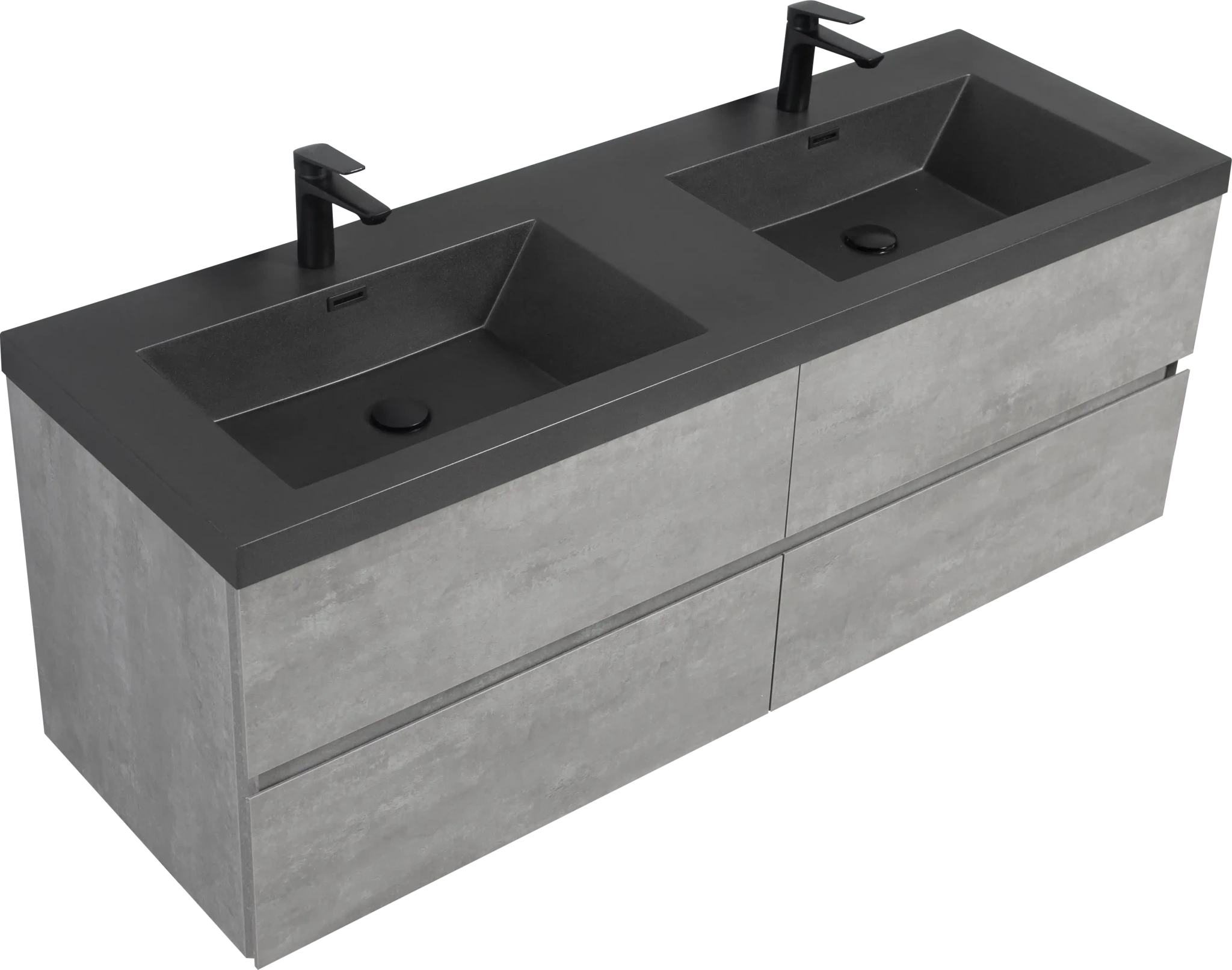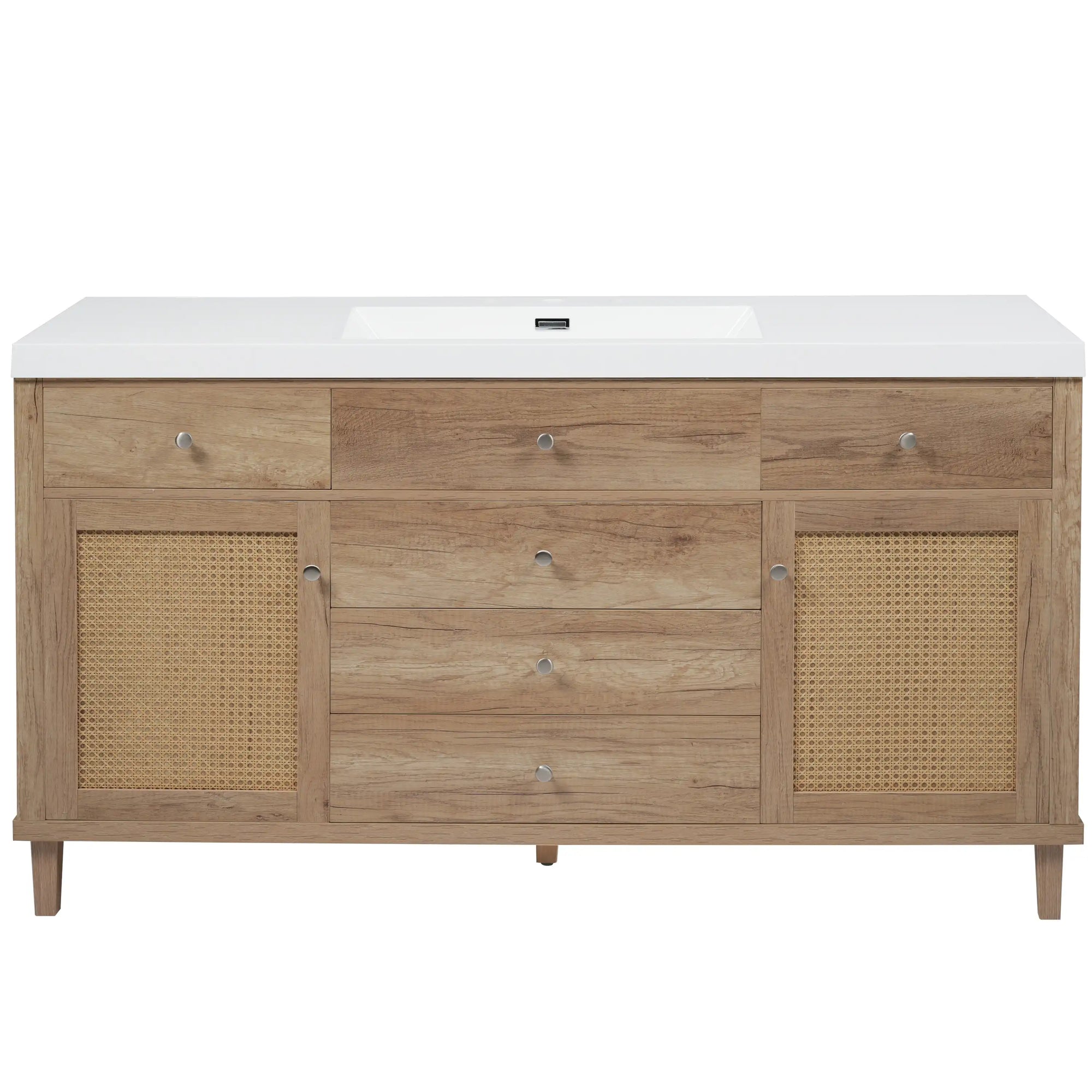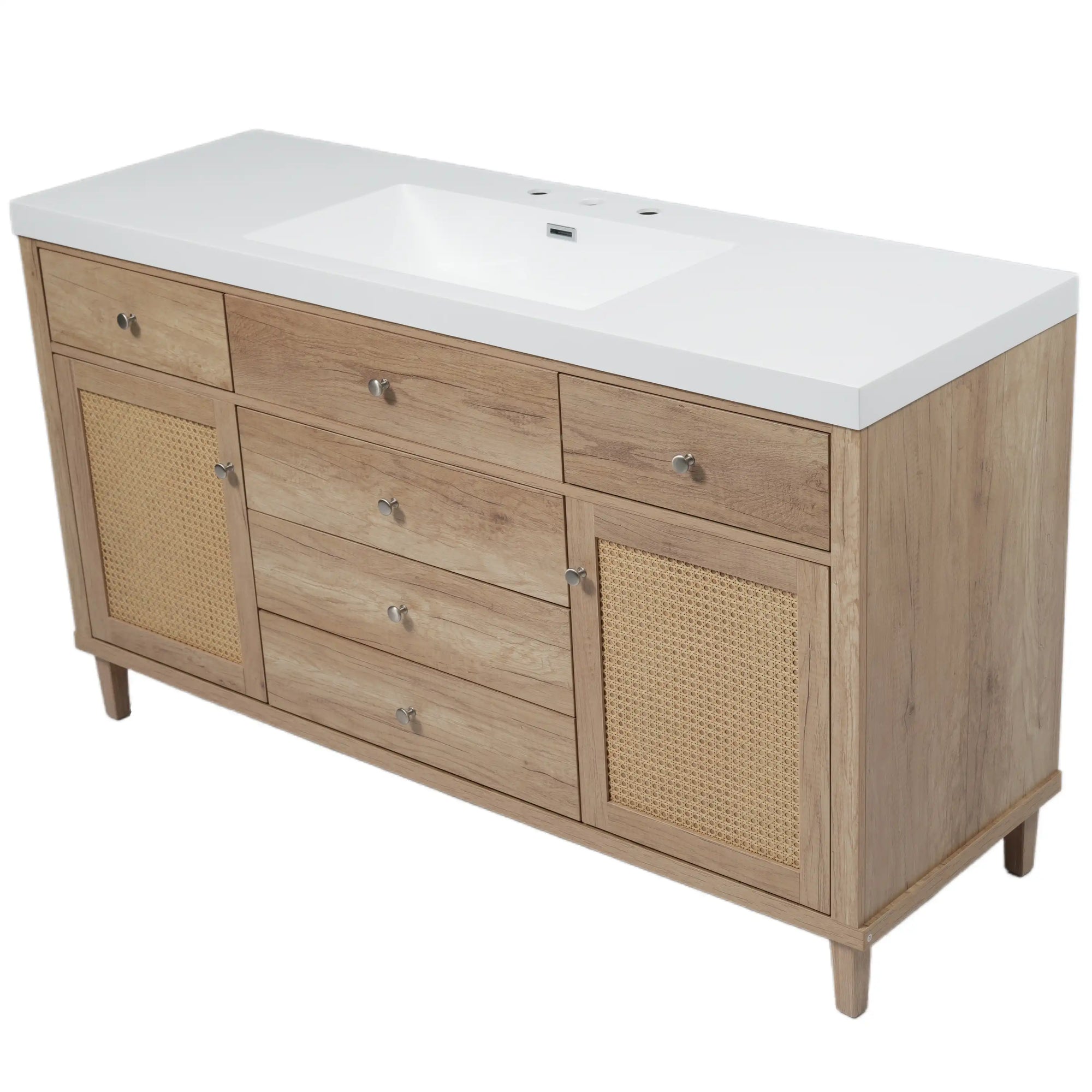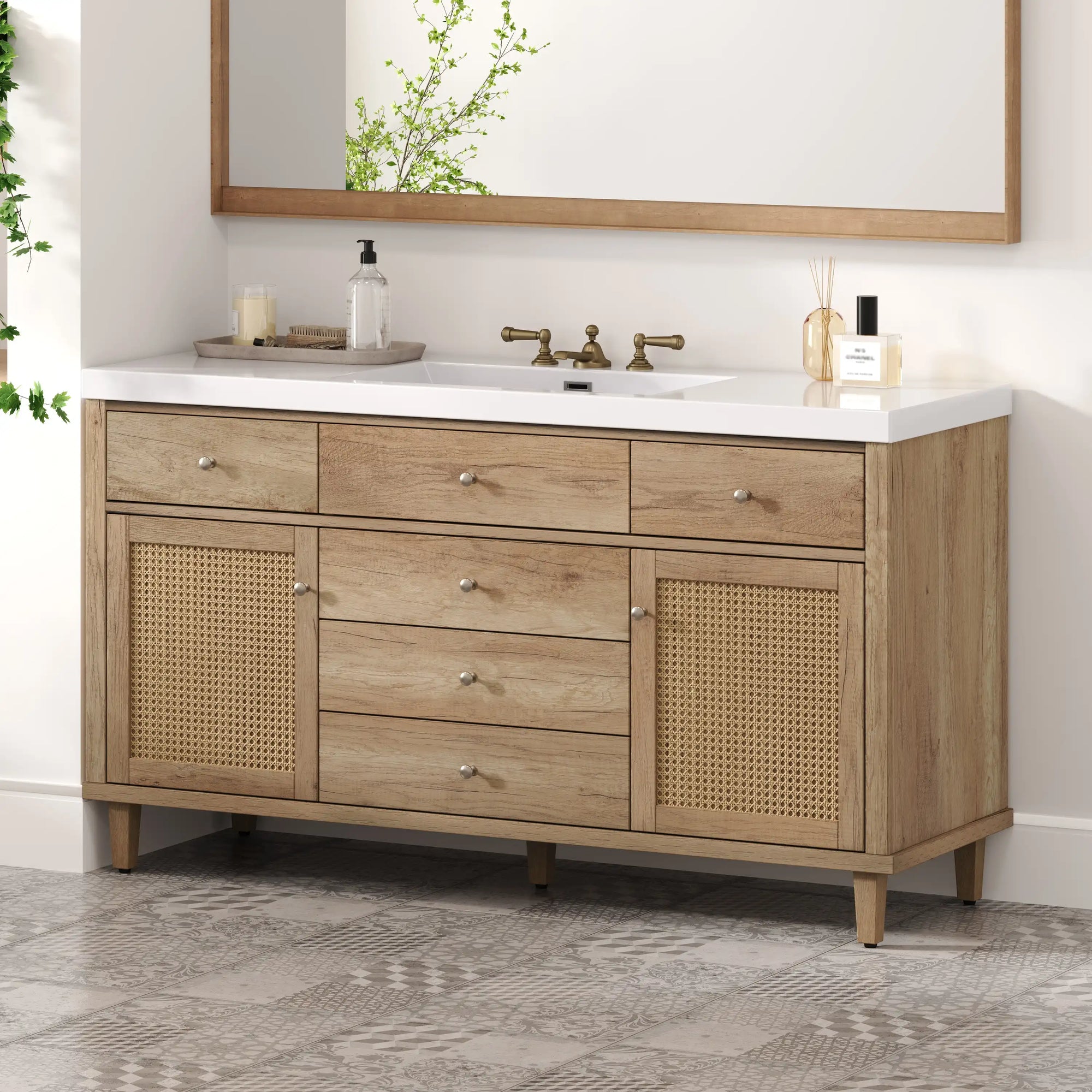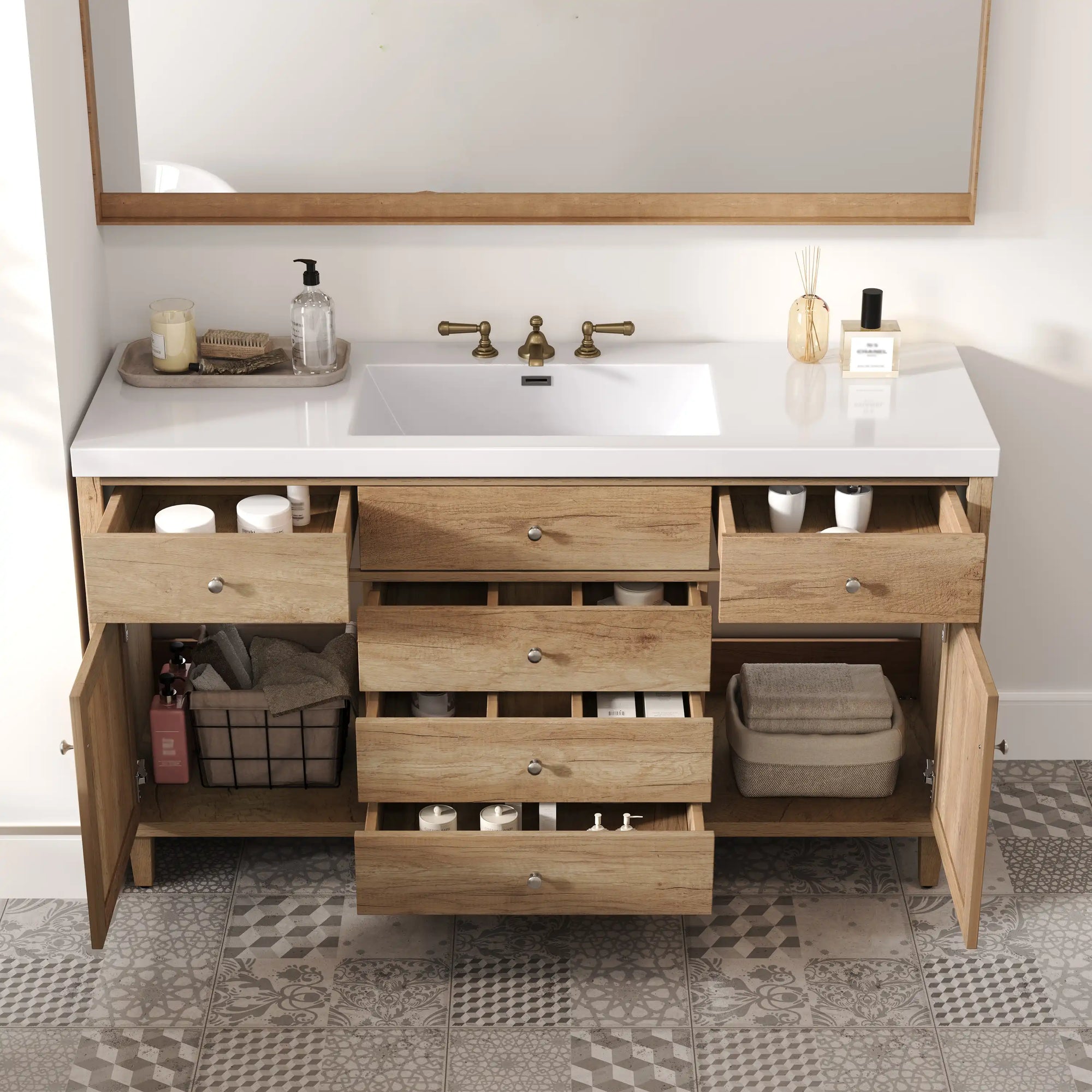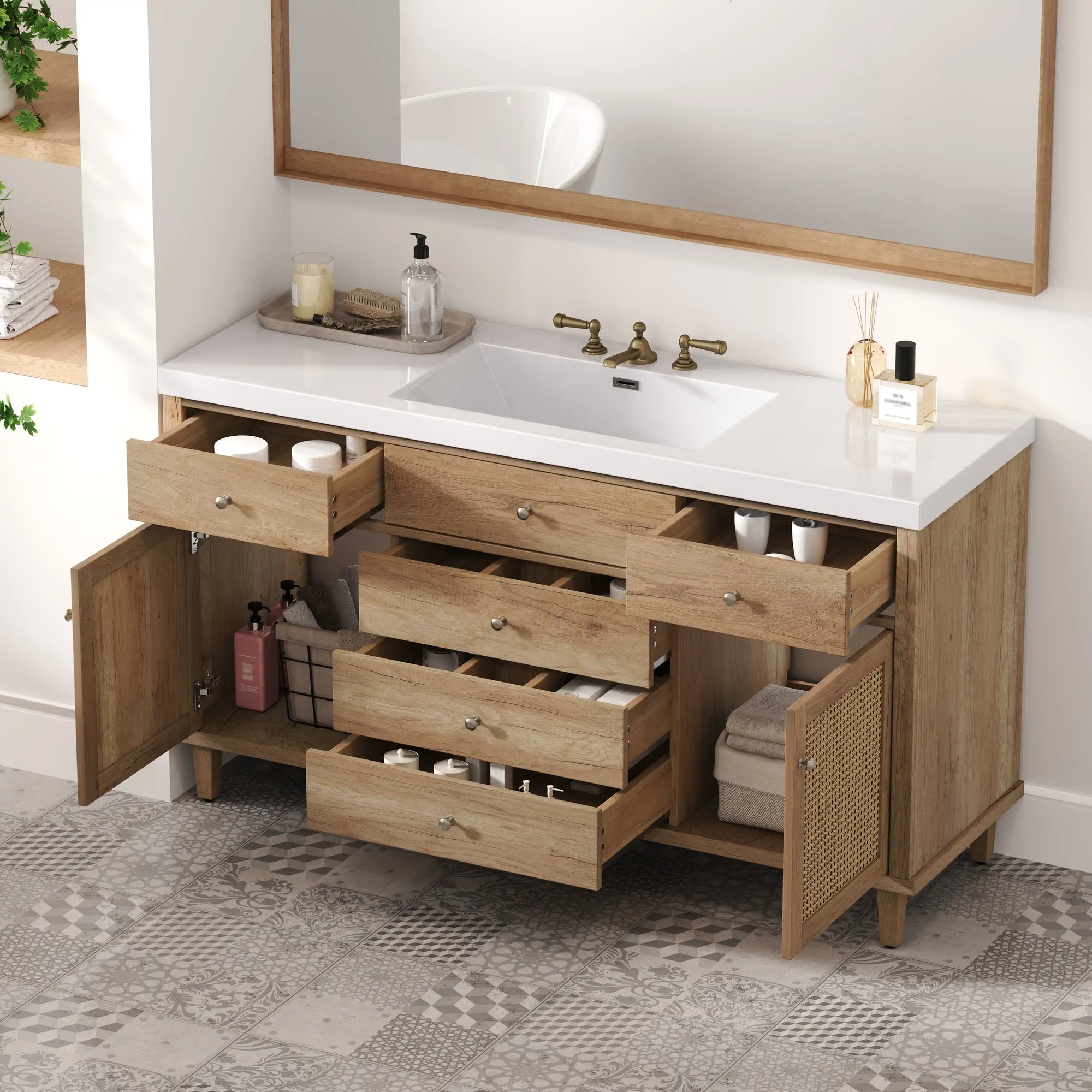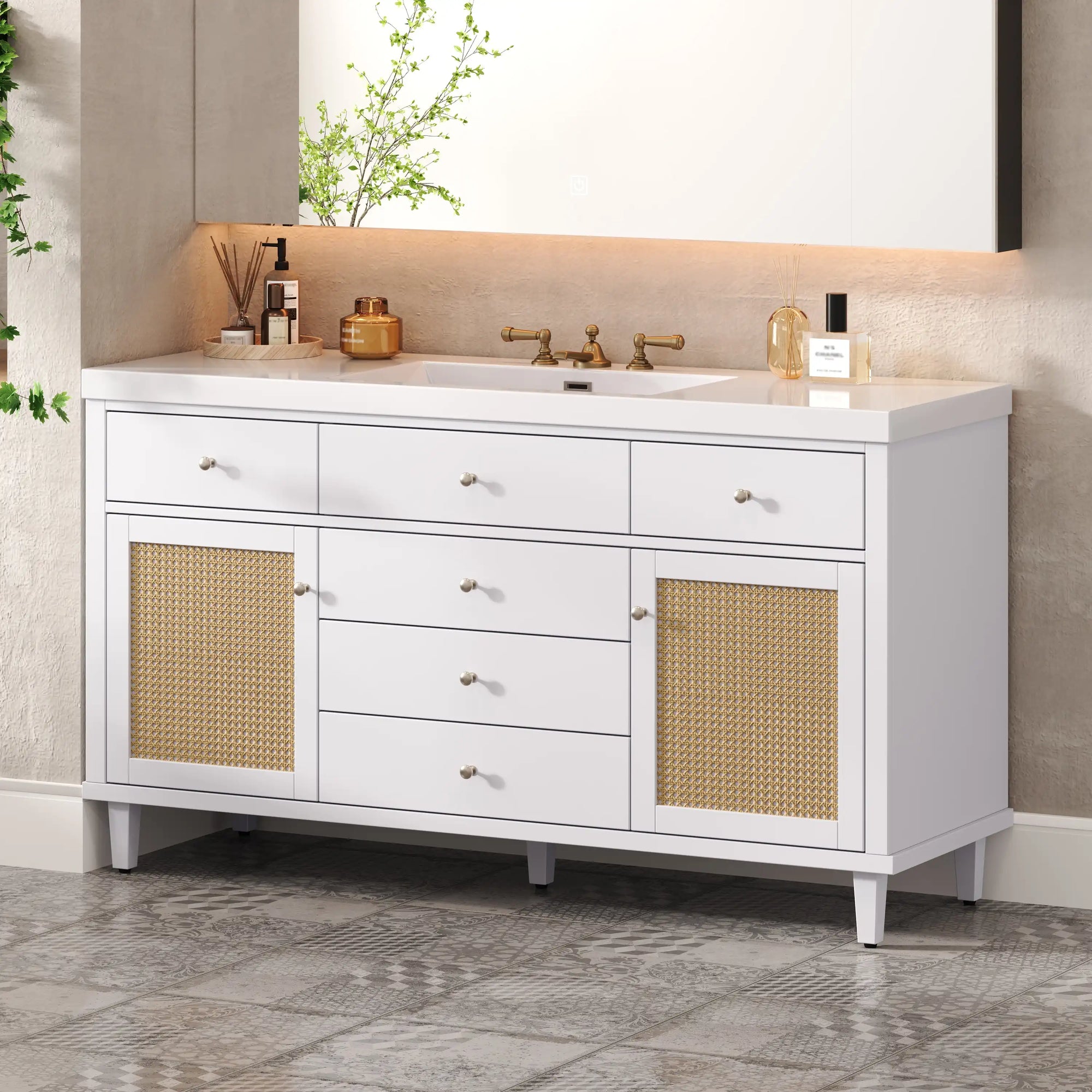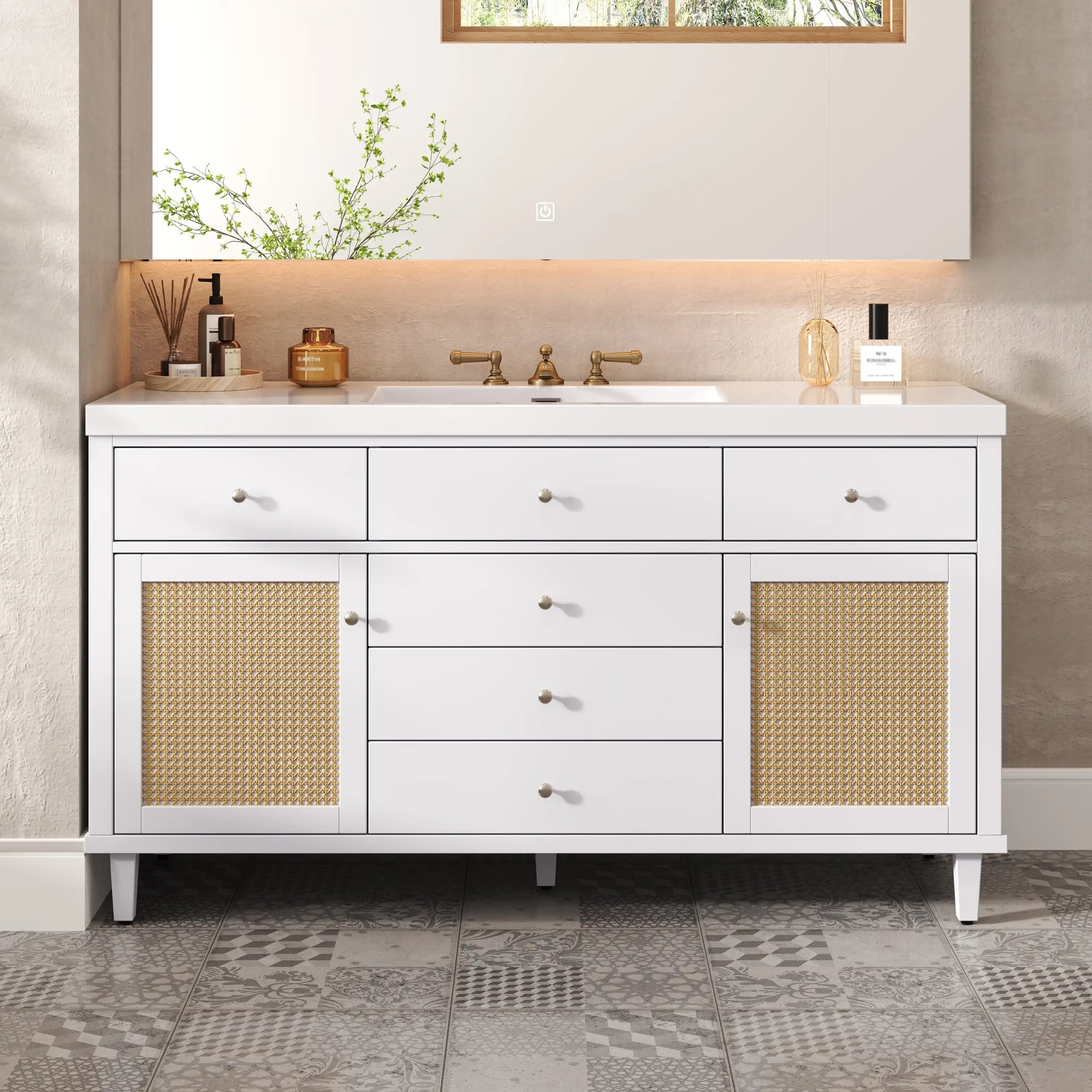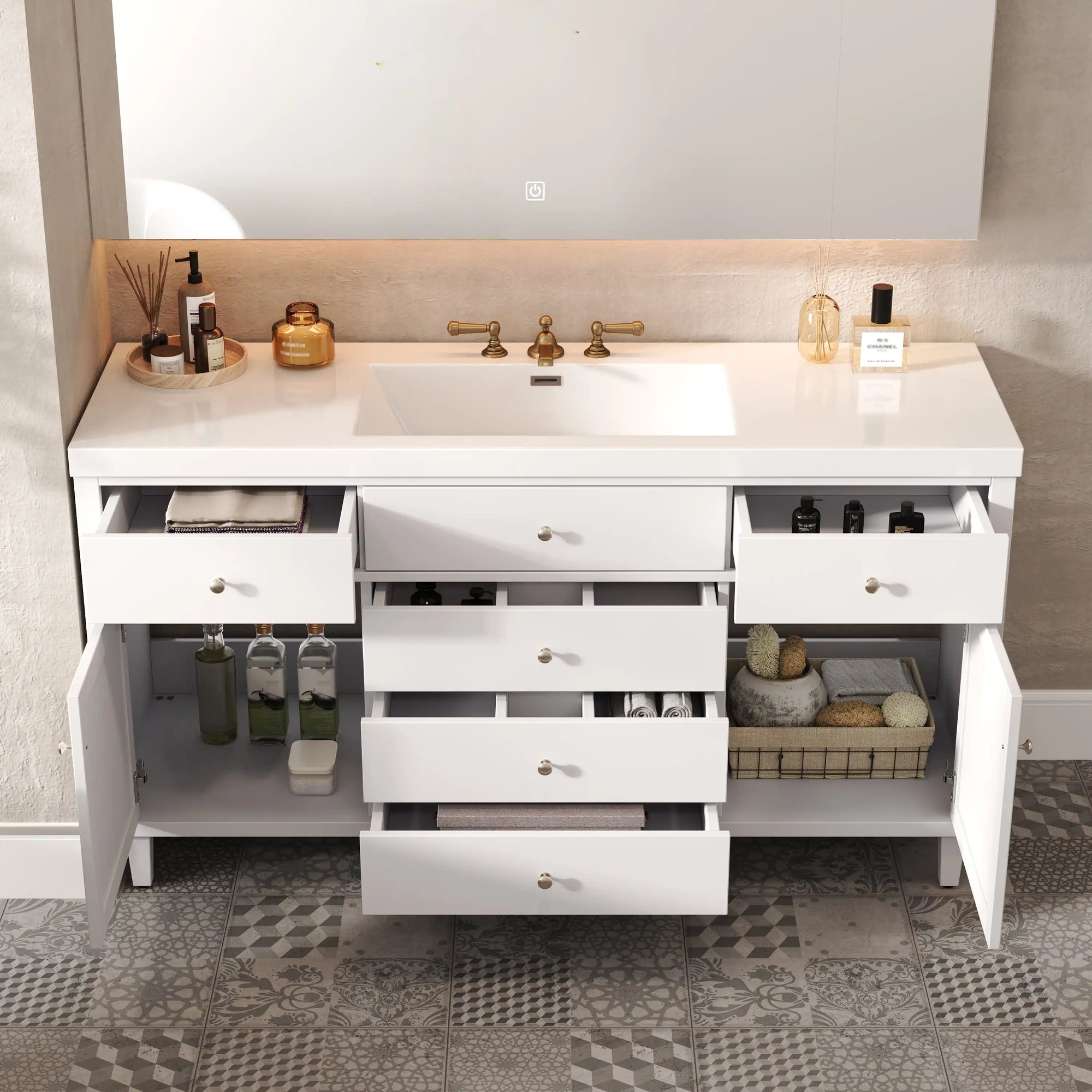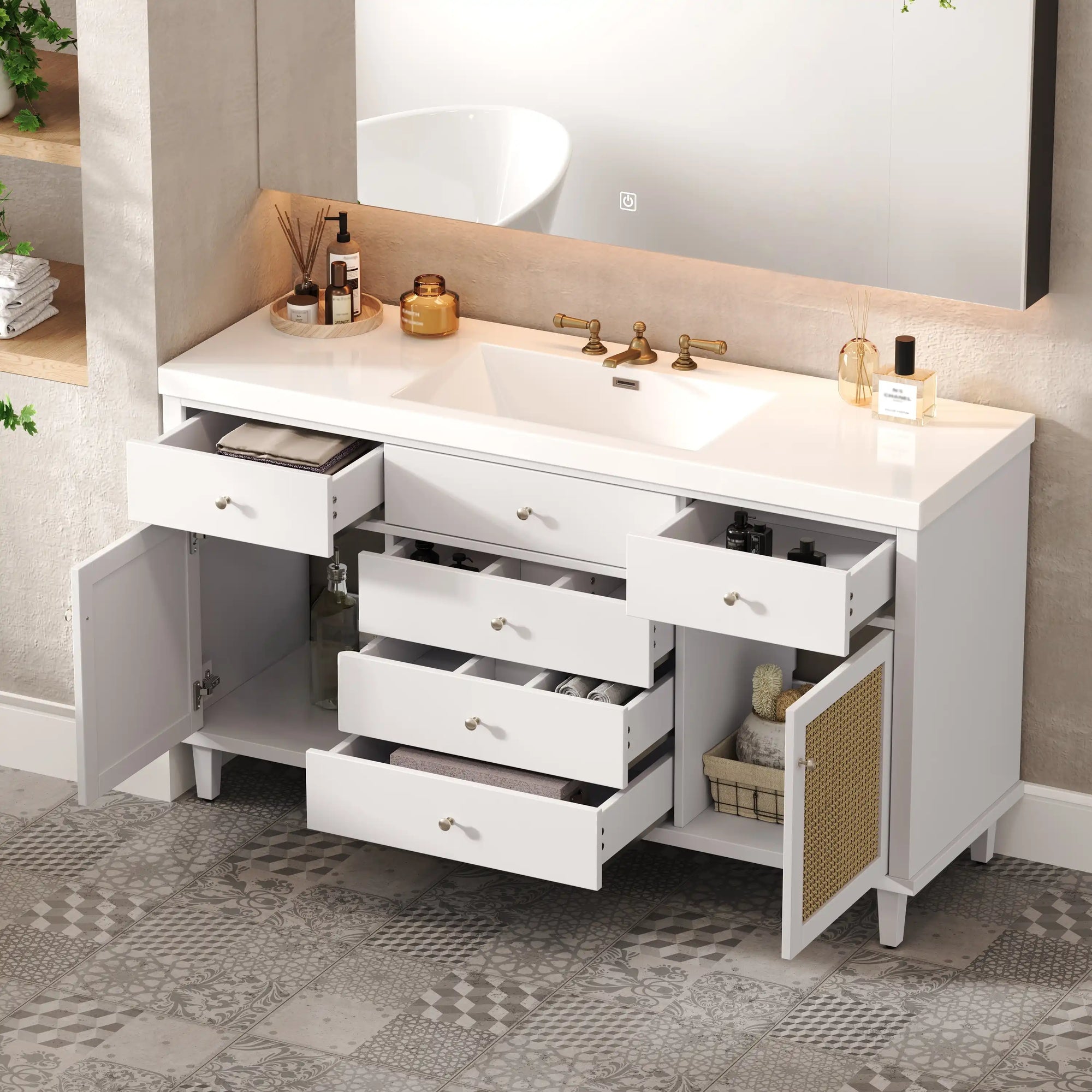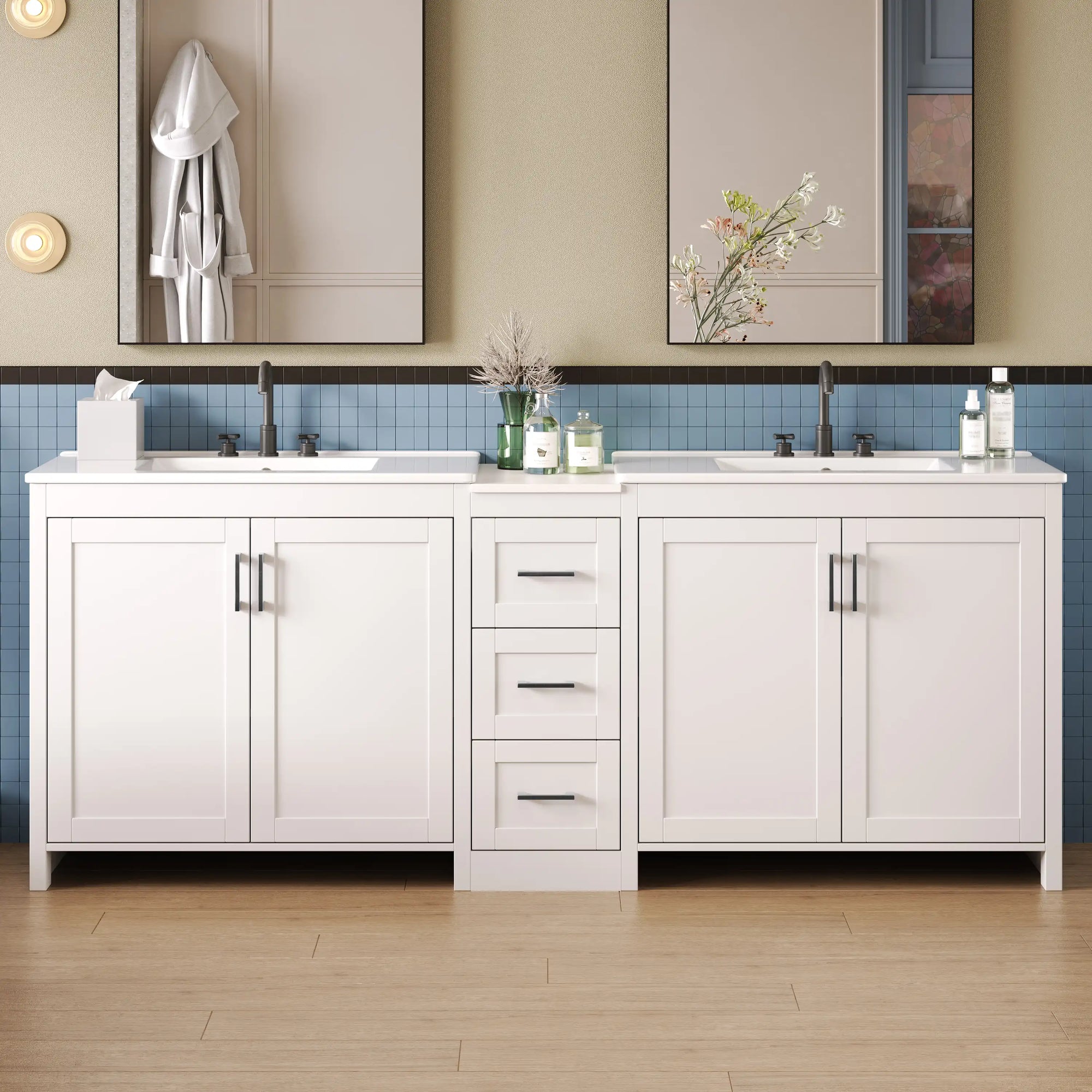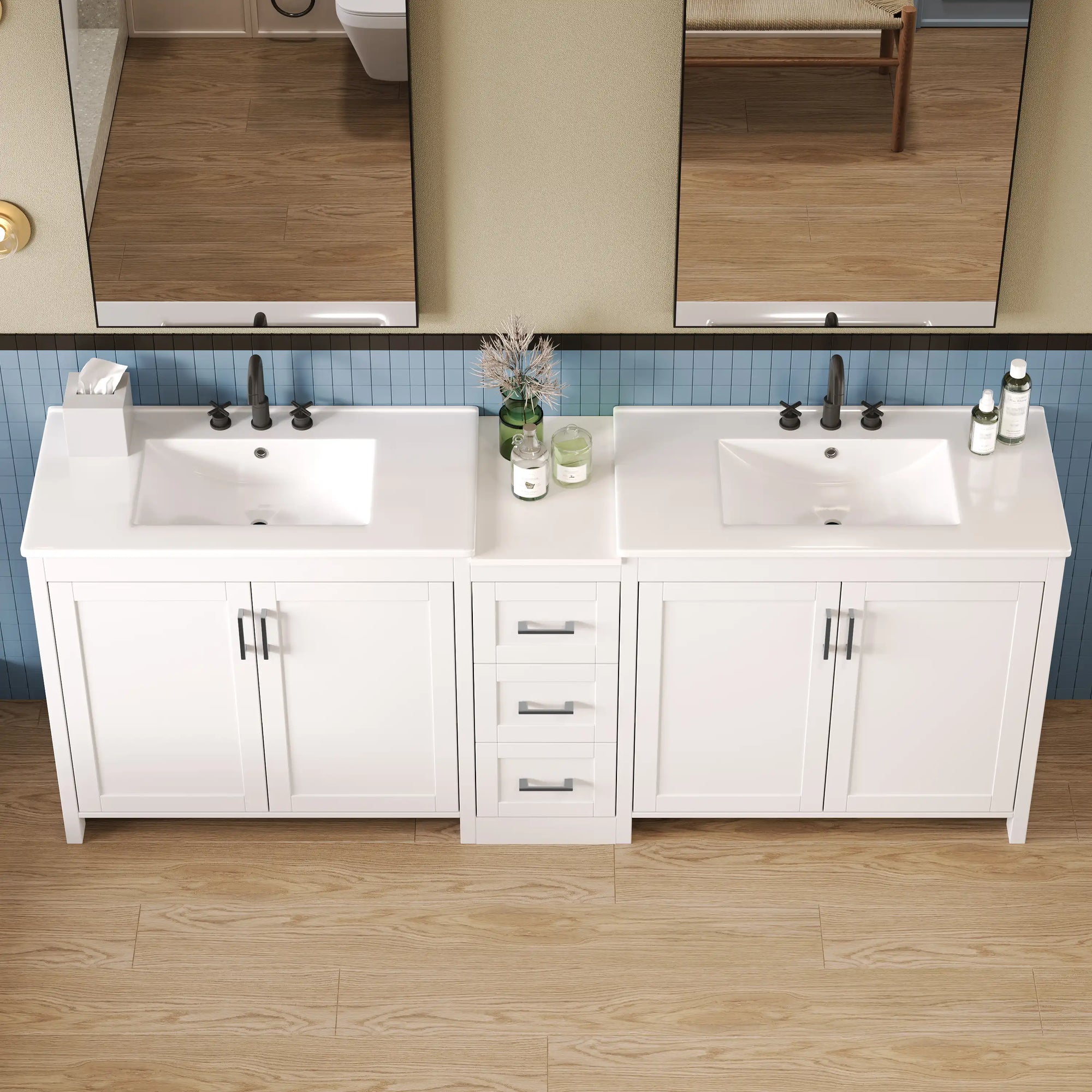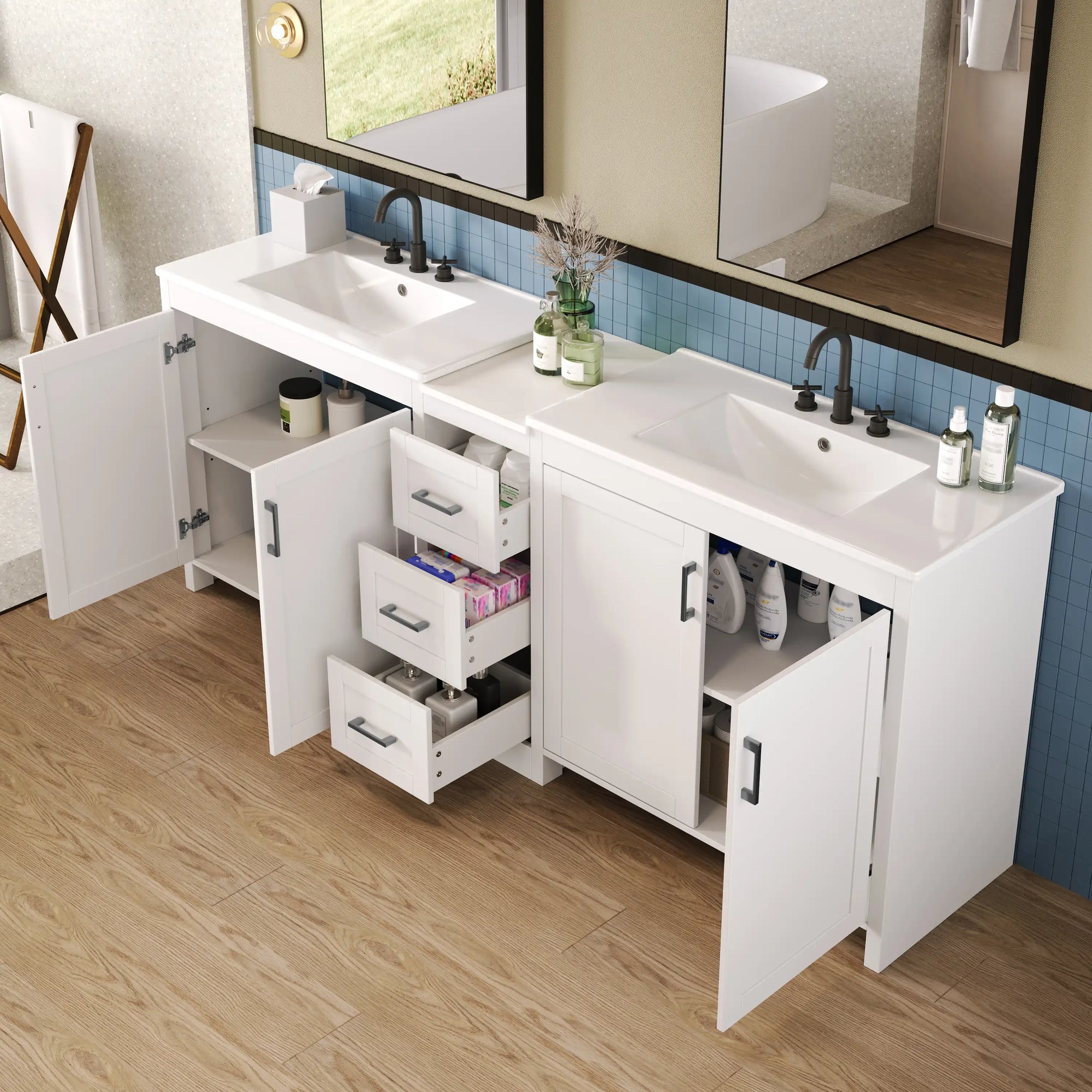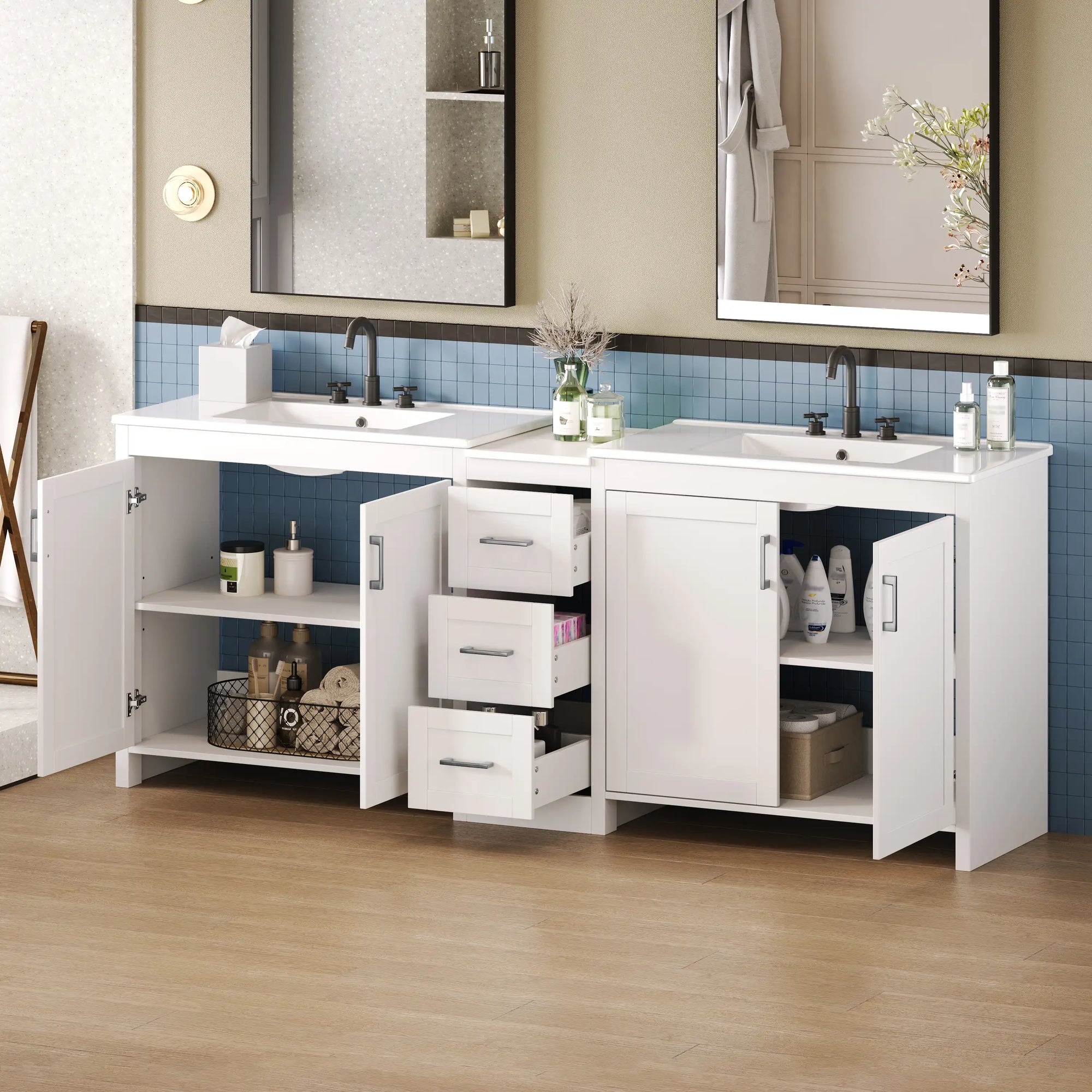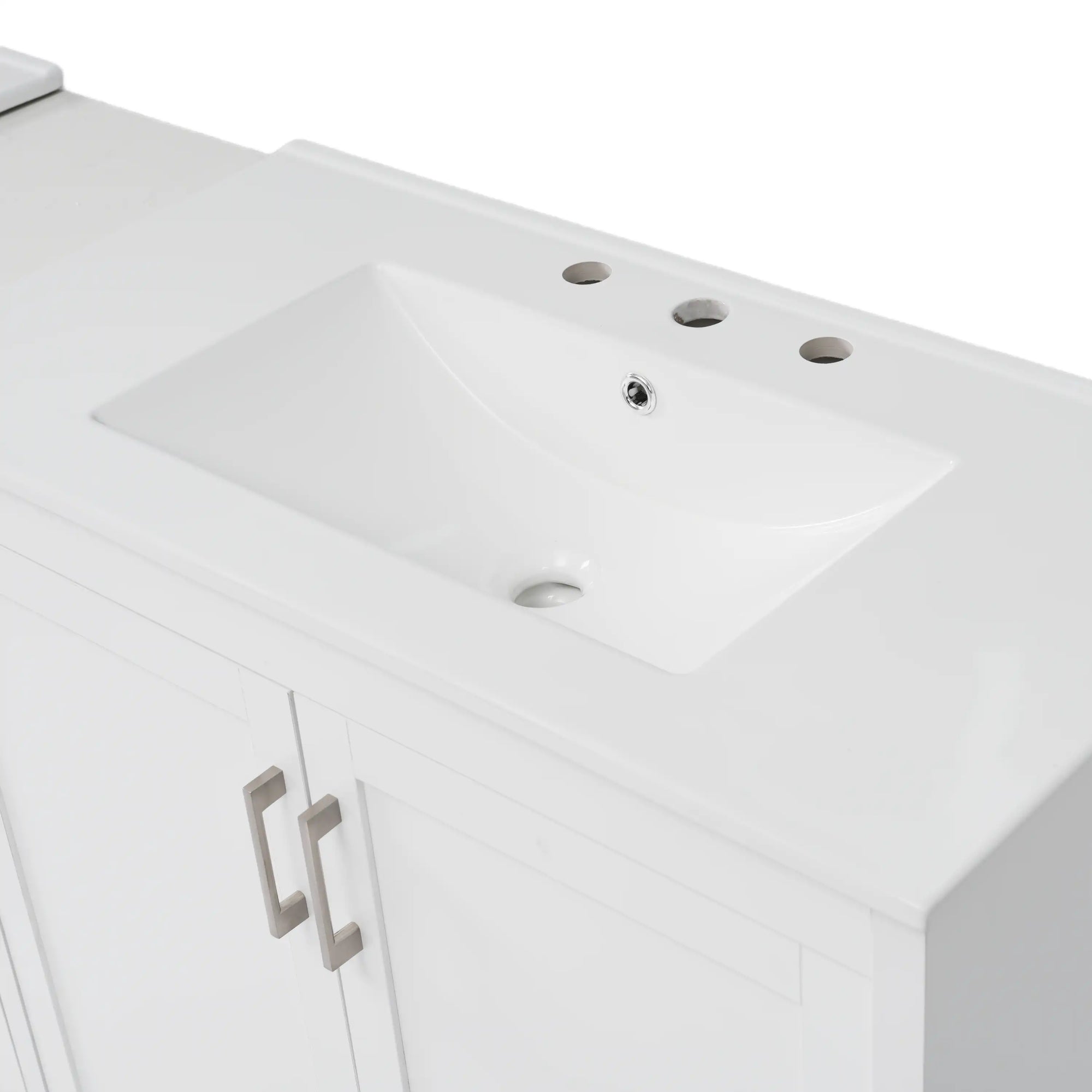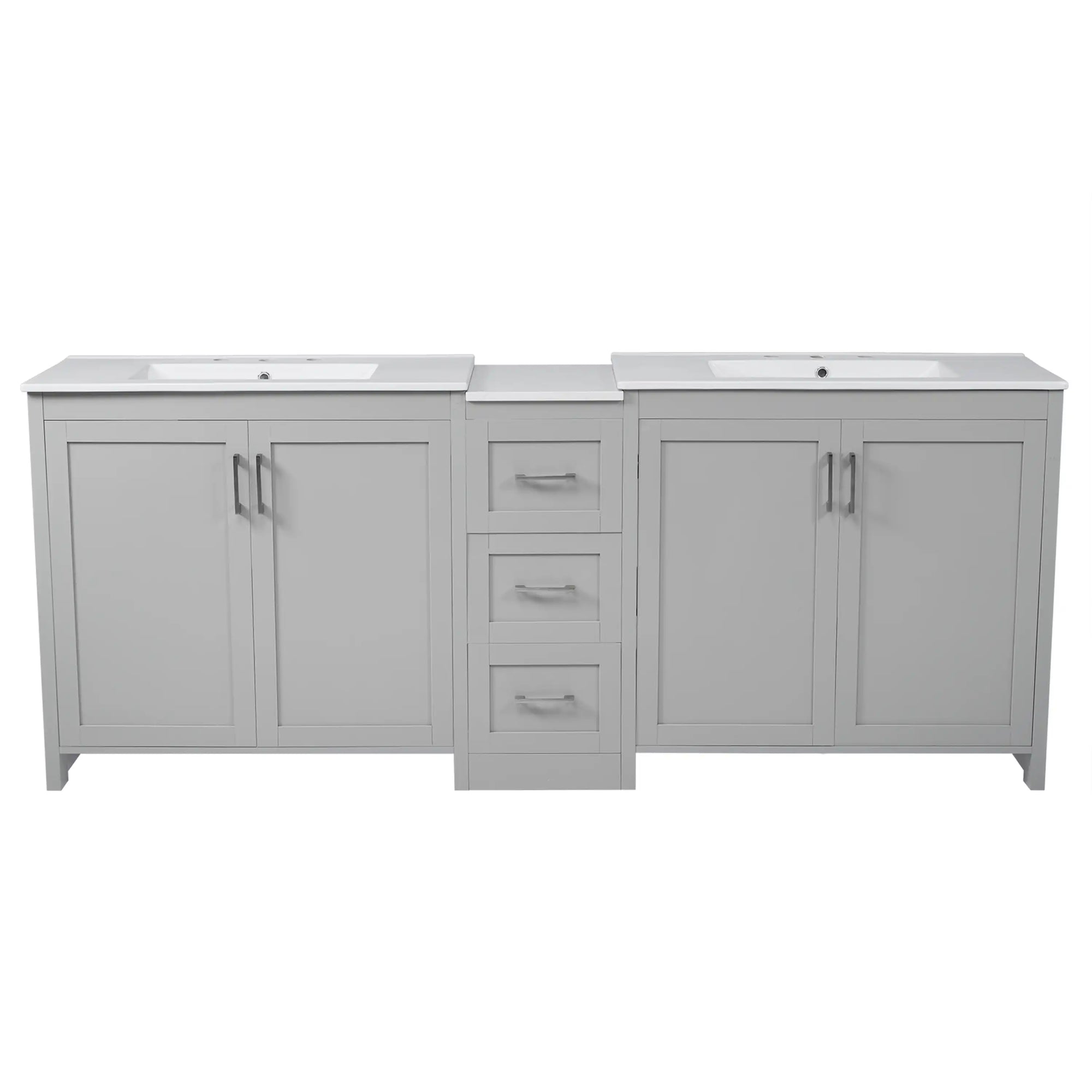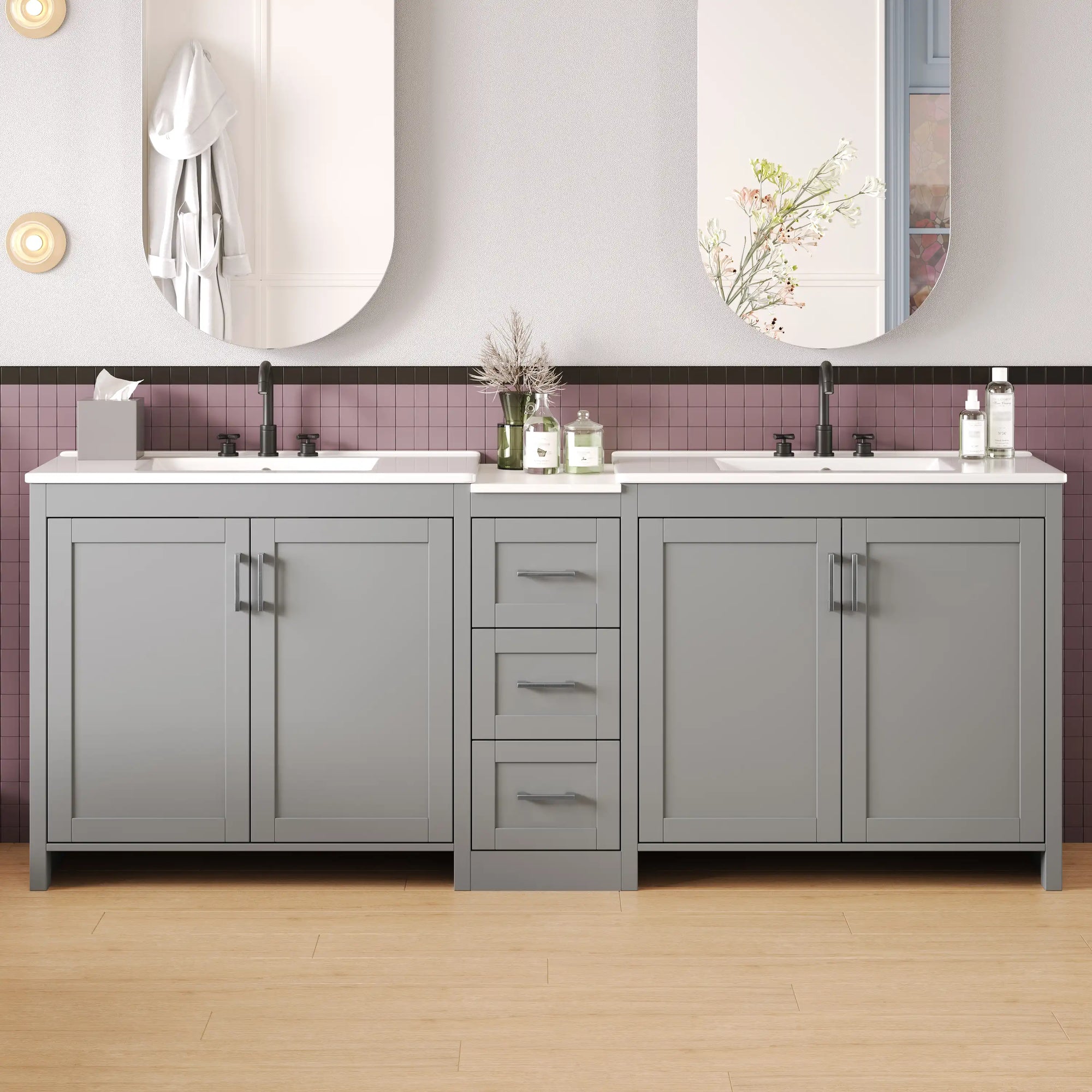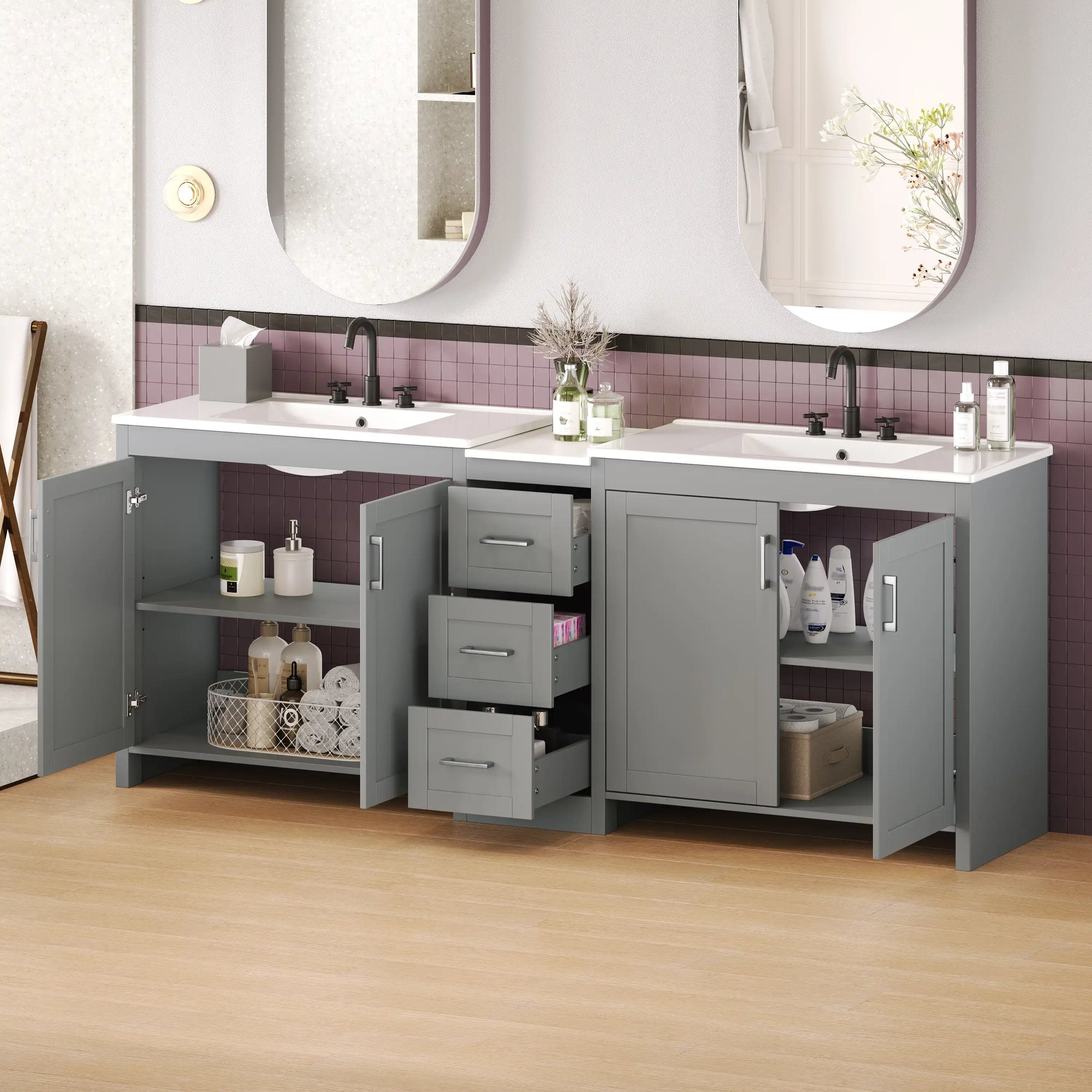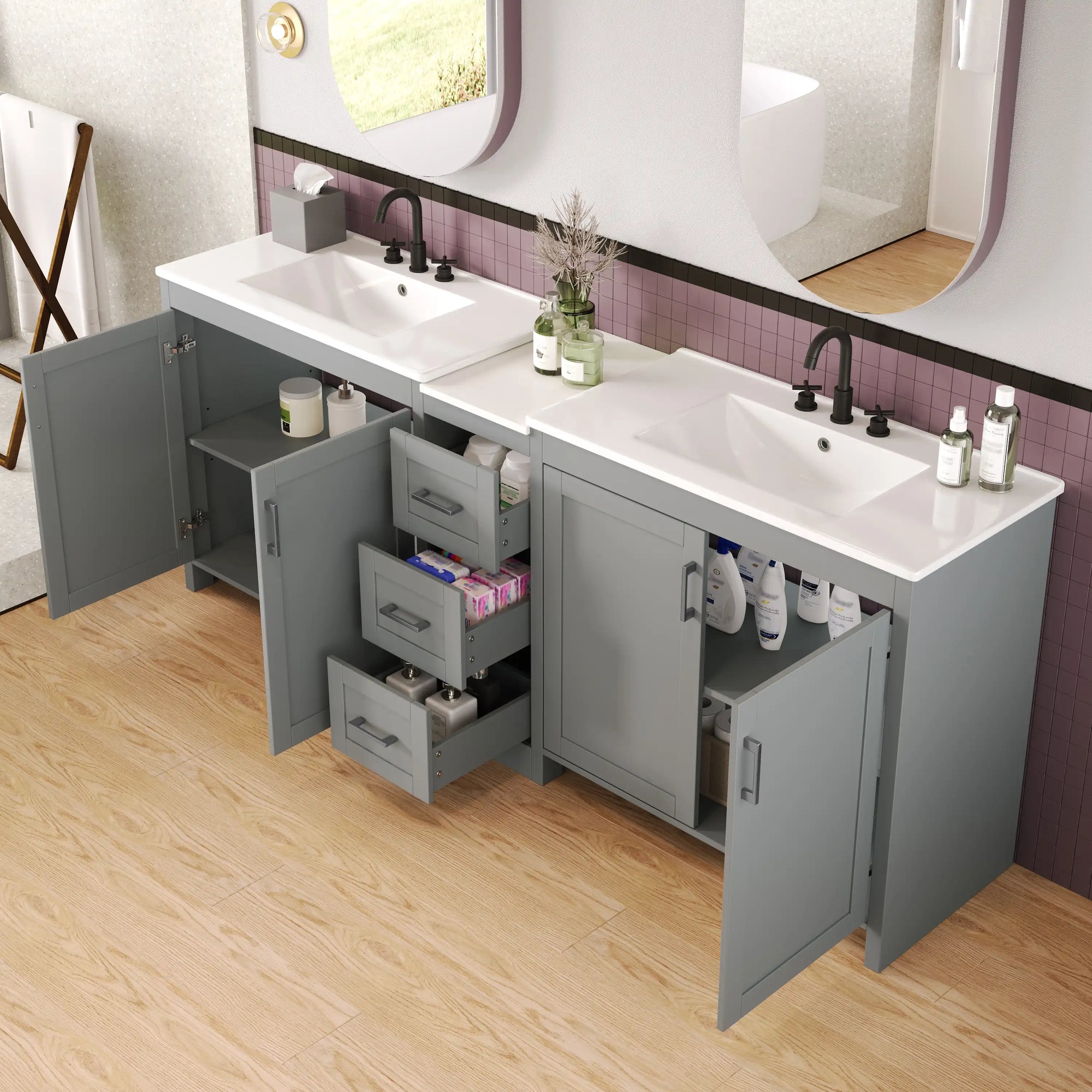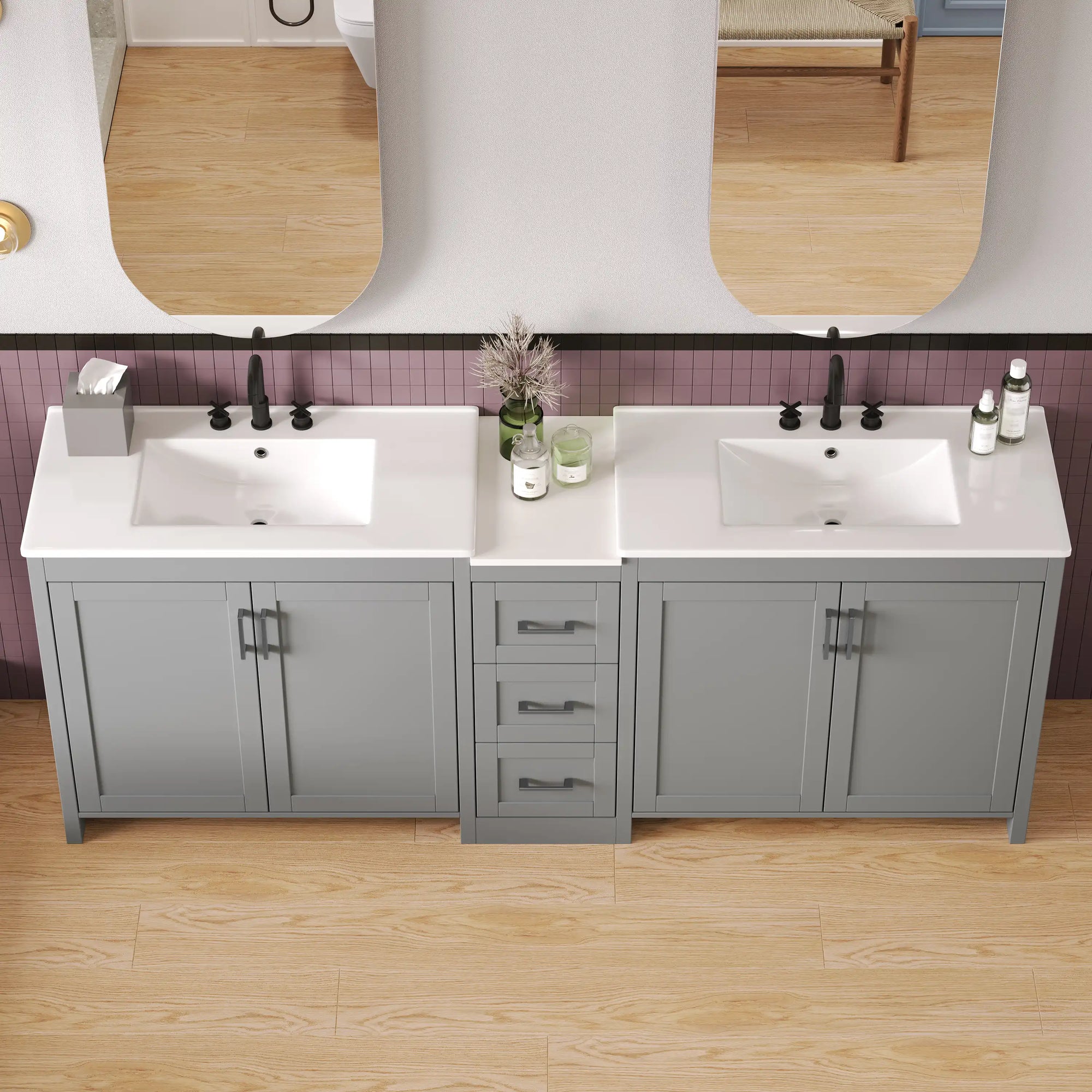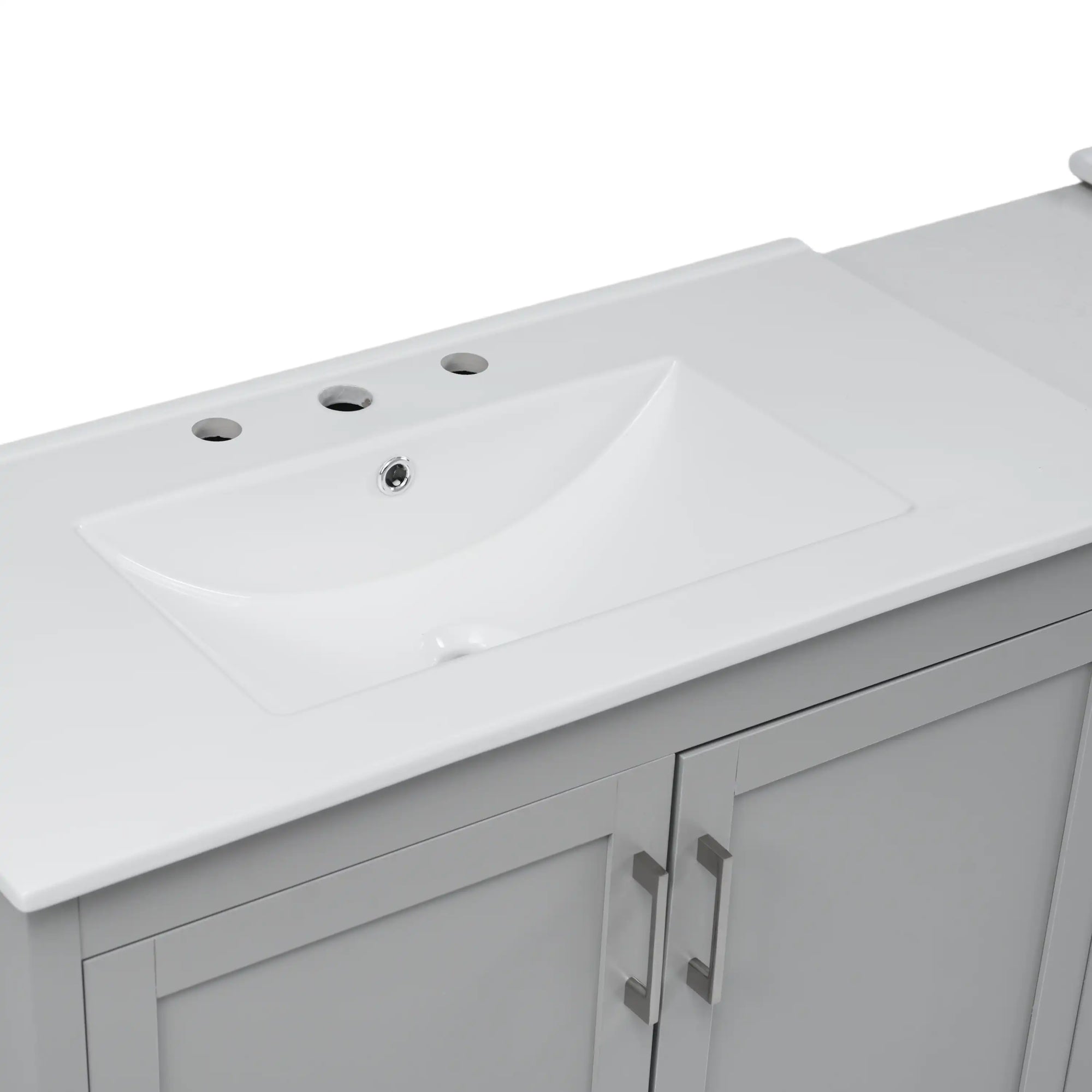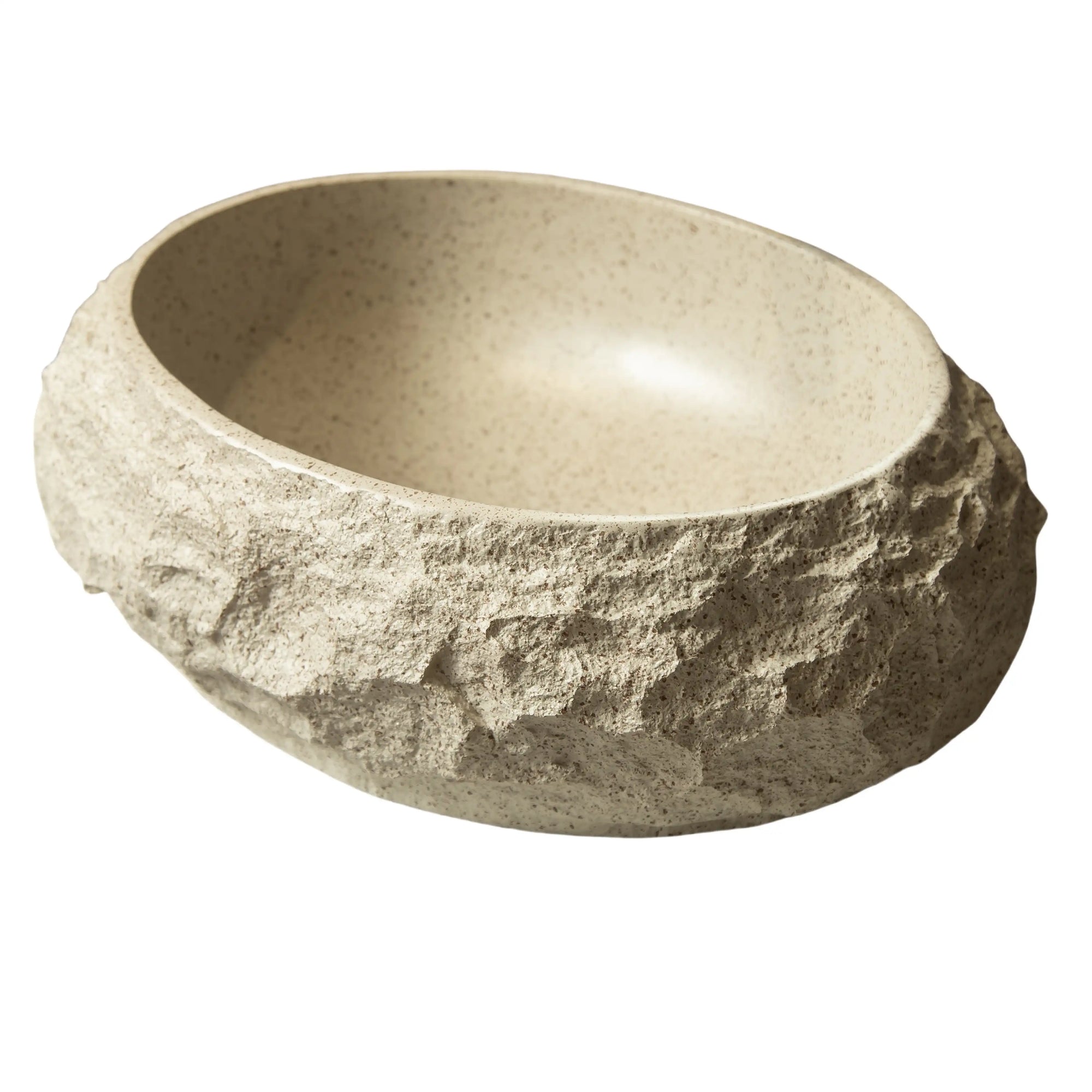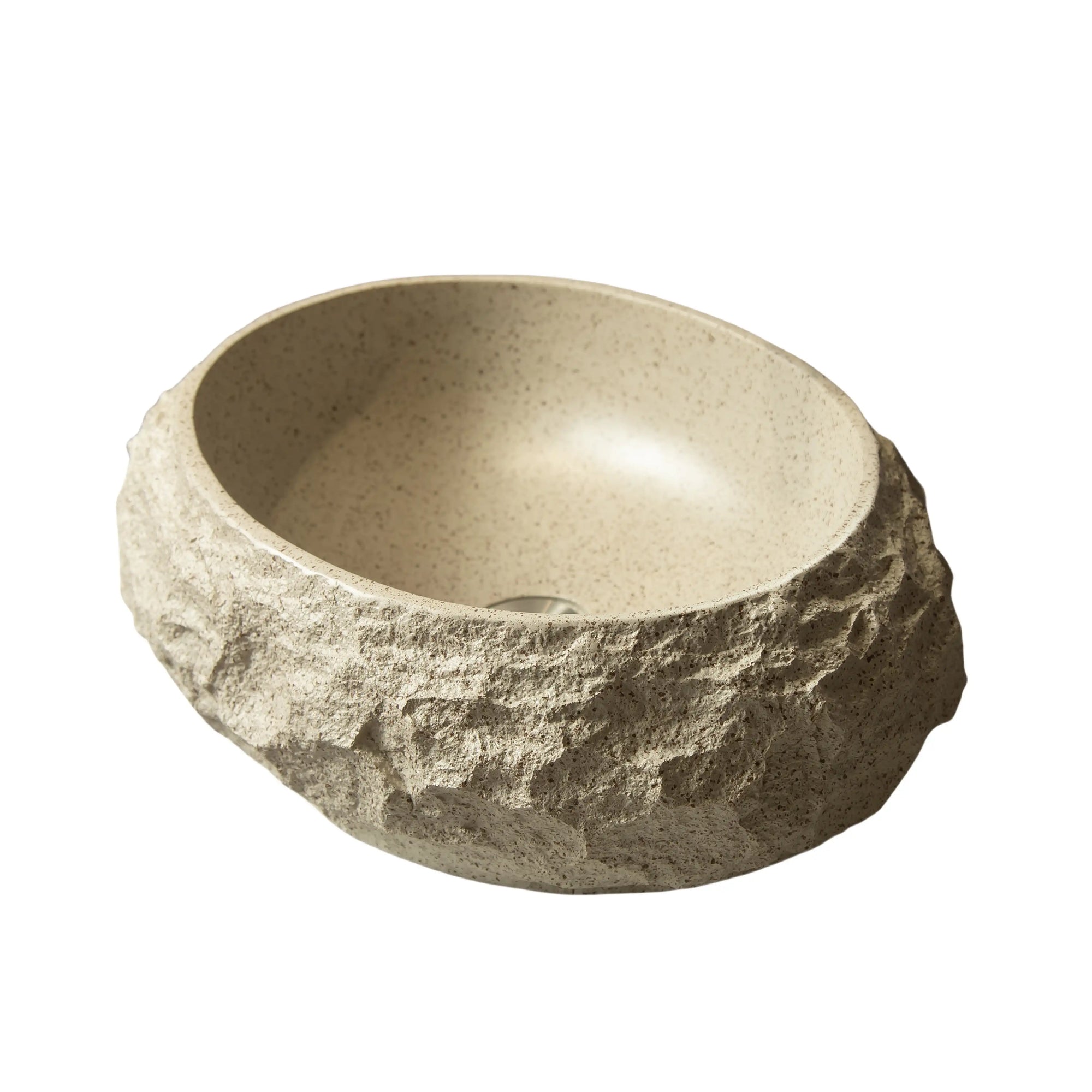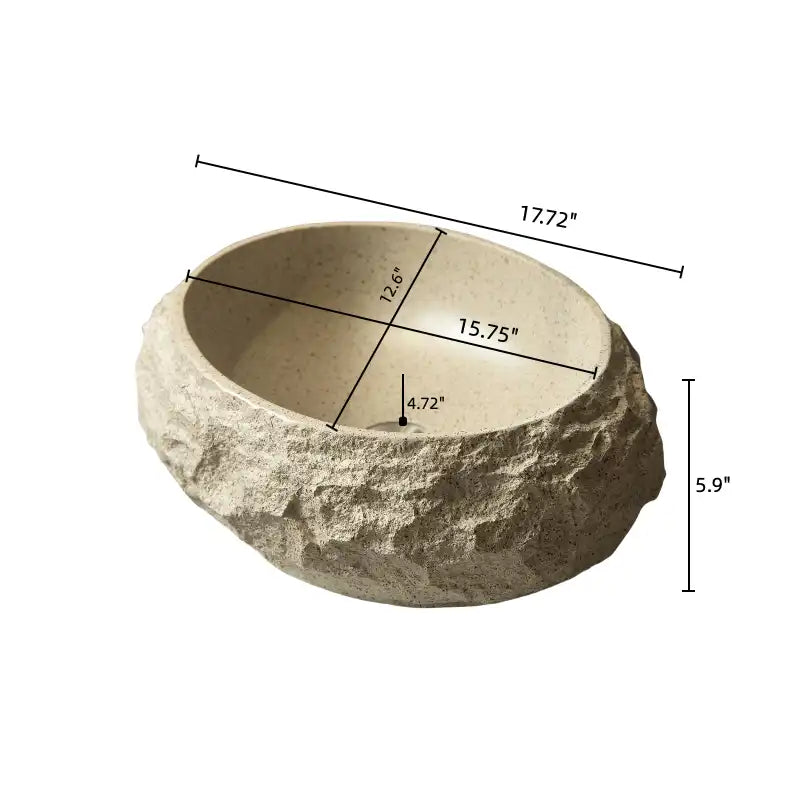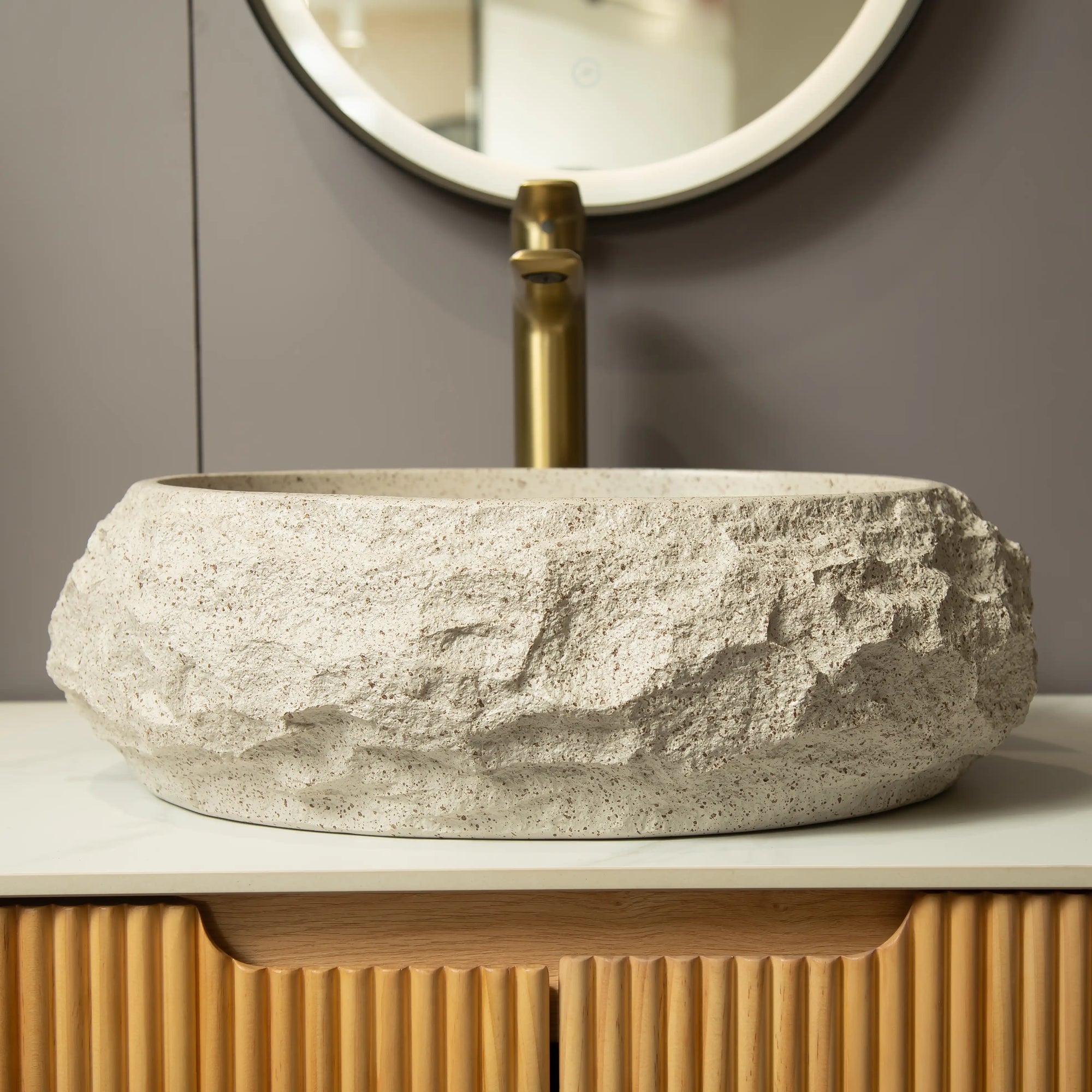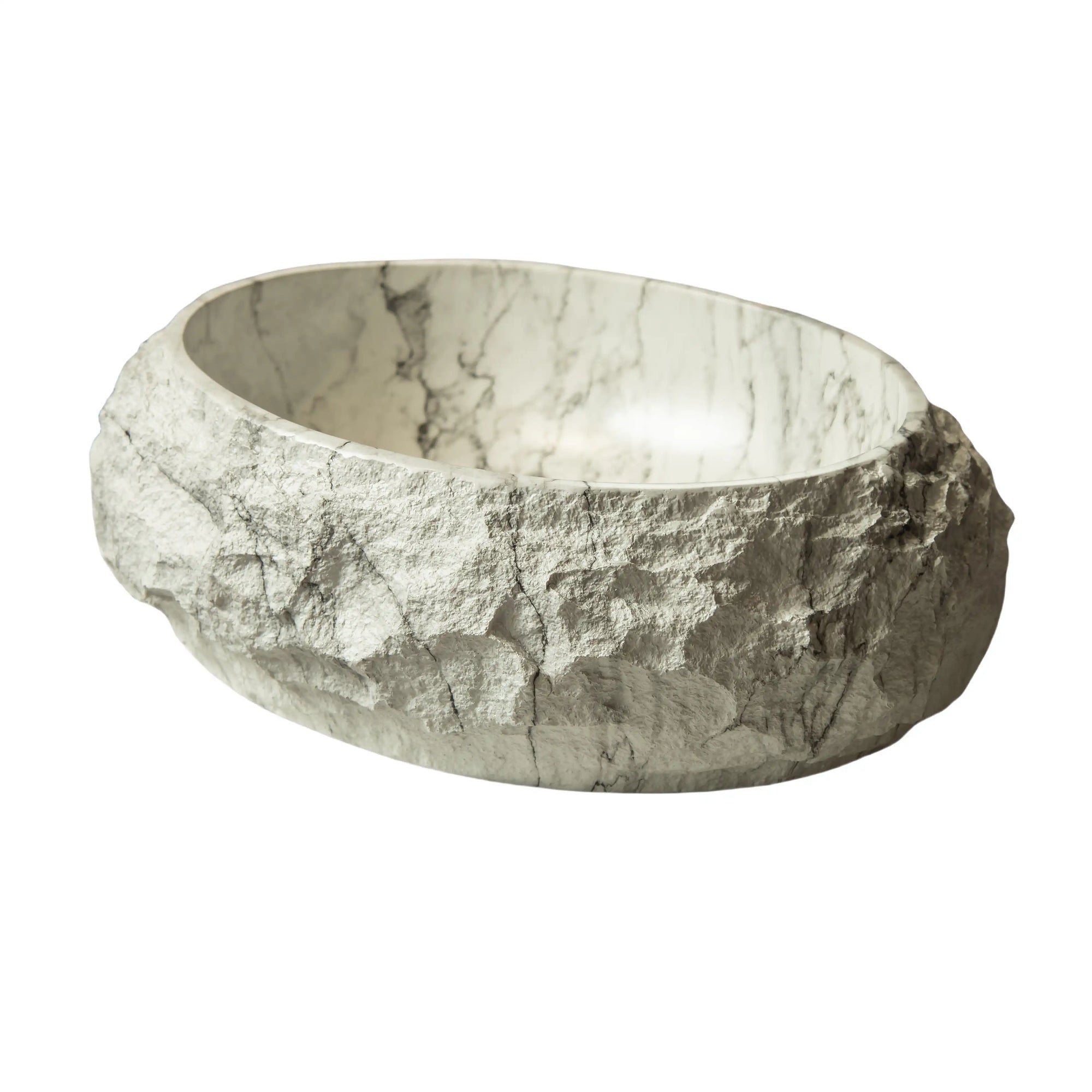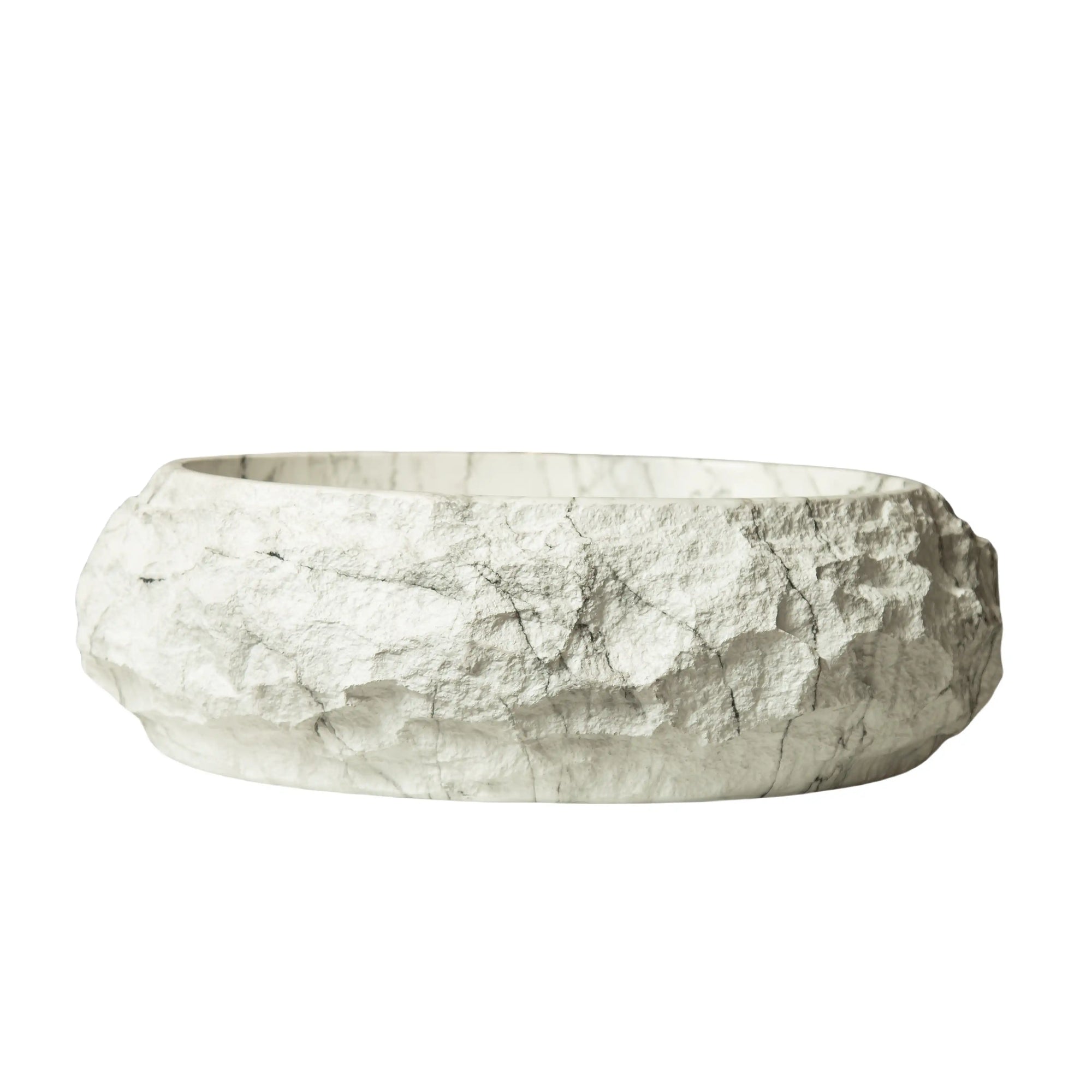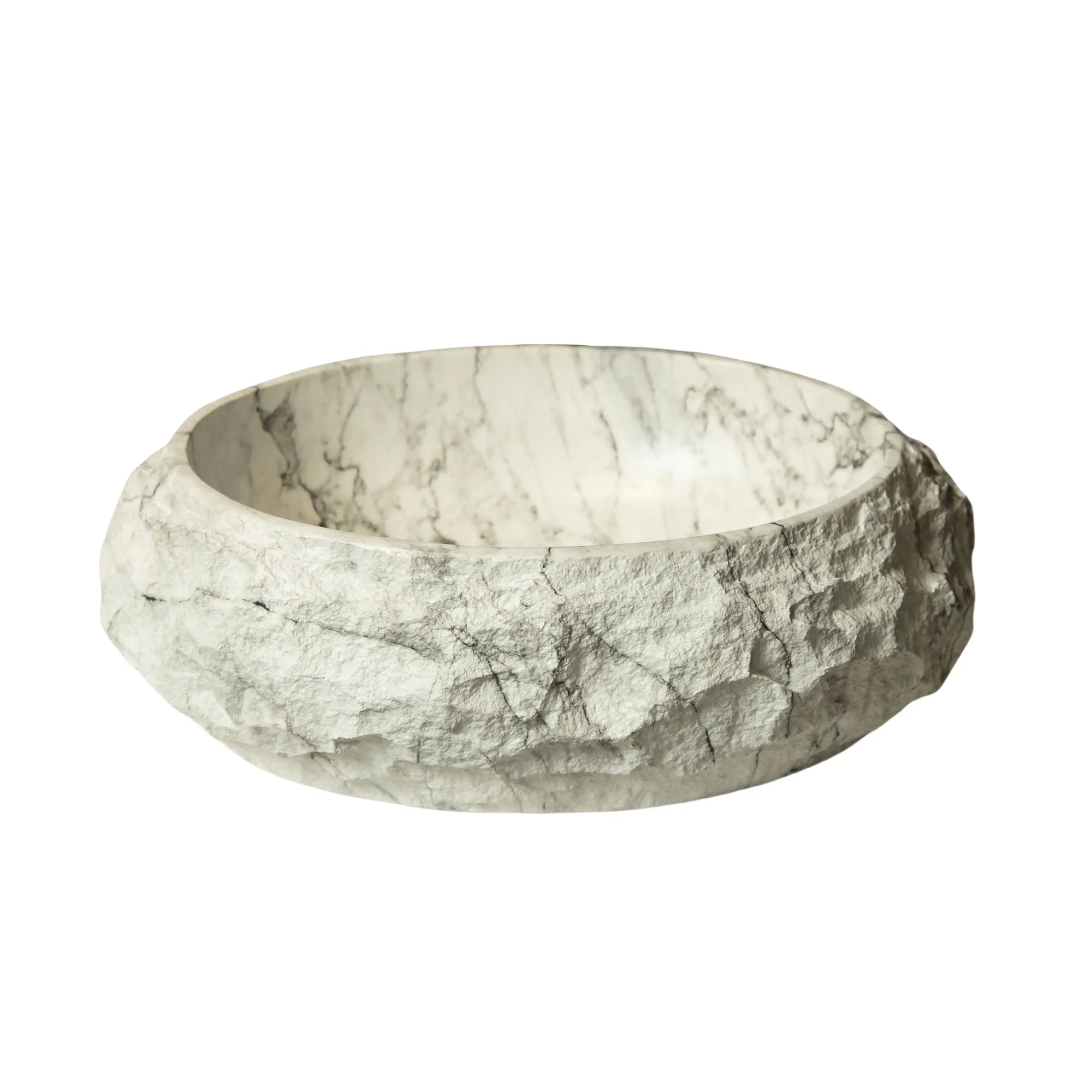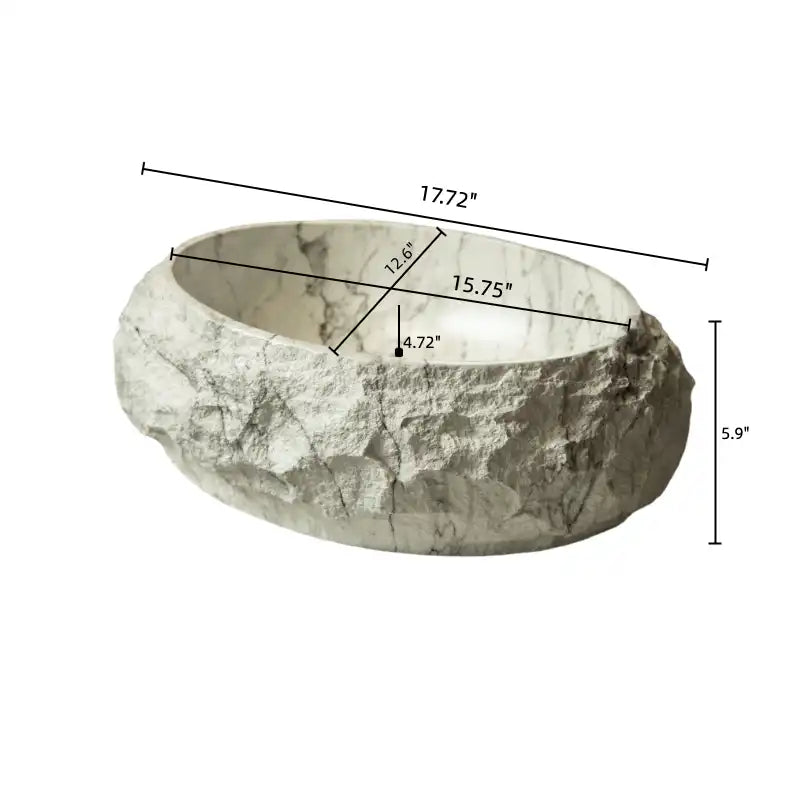Your bathroom sink is not just where you wash you hands, it is an important integral part of the entire space. The right sink can make a compact powder room feel polished or turn a master bath into a true retreat. With so many options out there today, bathroom drop-in sinks are the perfect combination of fashionable, functional and convenient. With their signature rim resting neatly on the countertop, they combine a timeless design with an installation process that appeals to both DIY renovators and professional designers.
Whether your goal is a quick refresh or a complete remodel, understanding the role of a drop-in sink can help you achieve a bathroom that looks beautiful and works flawlessly every day.
Table of Contents:
- What Are Bathroom Drop-In Sinks?
- Benefits of Choosing Drop-In Sinks
- Drop-In Sink vs. Undermount Sink
- Design Trends in Bathroom Drop-In Sinks
- Installation Guide: What You Need to Know
- Maintenance and Cleaning Tips
- How to Choose the Right Drop-In Sink for Your Bathroom
- Conclusion
- FAQ
What Are Bathroom Drop-In Sinks?
Also known as a self-rimming sink, a bathroom drop-in sink features a rim that extends over the counter and a basin that drops into a hole that has been cut out. The sink rim also hides the cut side of the countertop, while supporting the sink.
Drop-in sinks are manufactured in a wide variety of shapes like oval, round, rectangular, and come in materials ranging from classic porcelain to glass, stainless steel, and stone. Because the rim bears most of the weight, these sinks can be installed on nearly any type of vanity or countertop without requiring specialized reinforcement.
Drop-in sinks have been a standard in North American bathrooms for decades. Despite new design trends, they remain popular thanks to their practicality, cost-effectiveness, and wide availability in different shapes, colors, and sizes.

Benefits of Choosing Drop-In Sinks
Drop-in sinks for bathrooms are the perfect equilibrium of practical, cost-effective, and chic. The following are some of the primary advantages:
Ease of installation:
Drop-in sinks are simple enough for homeowners to install themselves. The rim gives the sink support, making it simpler than undermount models that require precise installation.
Versatility:
Drop-in sinks work with nearly all types of countertops, including those that cannot support undermount sinks.
Budget-friendly:
Drop-in sinks not only add a clean and polished look to your kitchen, but they are also typically some of the more affordable sinks on the market, perfect for renovations on a budget.
Variety:
From sleek modern shapes to traditional ovals, these sinks come in countless styles and materials. This flexibility allows homeowners to match them to different bathroom aesthetics.
Durability:
Many drop-in sinks are made from sturdy materials like porcelain and vitreous china, ensuring long-lasting performance.

Drop-In Sink vs. Undermount Sink
Homeowners often find themselves choosing between drop-in and undermount sinks. While both are excellent options, they serve slightly different needs:
Drop-In Sinks
Drop-in sinks rest on top of the countertop with a visible rim that supports the basin. This design makes them one of the most practical and widely used sink types in North American bathrooms.

| Pros | Cons |
|---|---|
|
|
Undermount Sinks
Undermount sinks are installed beneath the countertop, creating a flush transition between the sink and the counter. This design enhances visual appeal and makes surface cleaning easier.

| Pros | Cons |
|---|---|
|
|
In short, drop-in sinks excel in convenience and flexibility, while undermount sinks cater to high-end, minimalist designs. The choice often comes down to budget, style preference, and the type of countertop you plan to install.
Design Trends in Bathroom Drop-In Sinks
Just because drop-in sinks are practical doesn’t mean they can’t also be stylish. Current trends show homeowners experimenting with:
Materials:
Porcelain and ceramic remain the most common, but glass, stainless steel, and even natural stone are becoming more popular for unique looks.
Colors and finishes:
While white remains timeless, bold shades like matte black, soft gray, and earthy tones are on the rise. Metallic accents such as brushed gold or nickel faucets can elevate the overall design.
Shapes:
Beyond the traditional oval, rectangular and asymmetrical designs are gaining traction. Wider and shallower basins are also in demand for a contemporary feel.
Integration:
Designers often match sinks with countertops and backsplashes for a cohesive appearance. Drop-in sinks allow flexibility, making it easier to achieve a coordinated style without custom fabrication.
These evolving design choices highlight the adaptability of drop-in sinks, ensuring they stay relevant in both modern and traditional bathroom settings.

Installation Guide: What You Need to Know
Installing a bathroom drop-in sink is generally straightforward, but attention to detail is important.
Basic steps include:
-
Measure and cut a hole in the countertop to fit the sink.
-
Apply a bead of sealant around the cutout.
-
Lower the sink into place, ensuring the rim sits evenly on the counter.
-
Secure the sink with mounting clips (if provided).
-
Make the plumbing connections, and test for leaks.
Tools typically required:
measuring tape, jigsaw or hole saw, silicone sealant, adjustable wrench, and plumber’s putty.
DIY vs. professional installation:
This project can be done by most homeowners, but if plumbing must be modified or if the material of the countertop is especially difficult to cut, then it is best if a professional completes this project.
⚠️ Common mistakes to avoid
not sealing properly around the rim, using excessive force that cracks the sink, or failing to align the faucet and drain correctly.
Maintenance and Cleaning Tips
Like any fixture, drop-in sinks demand proper maintenance to retain their new appearance:
Daily cleaning:
Wipe the sink with a soft cloth and mild soap. Avoid abrasive scrubbers that could damage the surface.
Preventing stains:
Rinse after each use to lessen soap scum and mineral build-up.
Seal maintenance:
Check the sealant around the rim every once in a while to avoid leakage. If you observe gaps or deterioration, reseal it.
Material-specific care:
-
Porcelain: use non-abrasive cleaners to maintain shine.
-
Glass: avoid extreme temperature changes to prevent cracking.
-
Stainless steel: wipe in the direction of the grain to minimize scratches.
-
Natural stone: use pH-neutral cleaners to protect the finish.
How to Choose the Right Drop-In Sink for Your Bathroom
When selecting a sink, consider the following factors:
Size:
Measure your countertop and available space. An oversized sink can dwarf a small vanity, while one that is too small can appear out of proportion.
Countertop compatibility:
Check if the sink will work with your type of countertop material and structure.
Material:
Choose a material that balances aesthetics, durability, and budget. For example, porcelain offers timeless elegance, while glass delivers a contemporary touch.
Style:
Match the sink’s shape and color to the overall bathroom design, whether traditional, modern, or eclectic.
Functionality:
Consider depth, faucet compatibility, and whether the sink will be used in a guest bathroom or a primary family space.
Careful selection ensures that your investment enhances both the daily usability and visual appeal of your bathroom.

Conclusion
Drop-in sinks for bathrooms remain amongst the most versatile and chic designs for the modern household. Their ease of installation, affordability, and wide variety of designs make them a reliable choice for bathrooms of all sizes and styles. By understanding their benefits, comparing them with undermount sinks, staying aware of design trends, and following proper installation and maintenance practices, you can ensure that your sink remains both functional and beautiful for years to come.
FAQ
Q1. What is the difference between a drop-in sink and an undermount sink?
A: A drop-in sink rests on the countertop with a visible rim, while an undermount sink is installed beneath the counter for a seamless look. Drop-in sinks are easier to install, while undermount sinks provide easier surface cleaning.
Q2. Are bathroom drop-in sinks suitable for small bathrooms?
A: Yes. Their wide range of sizes makes them ideal for compact vanities, guest bathrooms, or powder rooms.
Q3. Can I install a drop-in sink by myself?
A: In many cases, yes. With the right tools and basic plumbing knowledge, DIY installation is possible. However, professional installation is advised for complex setups.
Q4. Which material is most durable for a drop-in sink?
A: Porcelain and vitreous china are among the most durable and scratch-resistant, though stainless steel and stone are also excellent choices depending on design preference.
Q5. Are bathroom drop-in sinks outdated?
A:
Related Articles
Small Bathroom Ideas with Shower to Transform Your Space
Bathroom Bench Ideas: Stylish and Practical Options for Every Home
A Complete Guide to Bathroom Sink Dimensions: Sizes, Styles, and Smart Choices
From Bathrooms to Balconies: Creative Uses for Floating Glass Shelves


